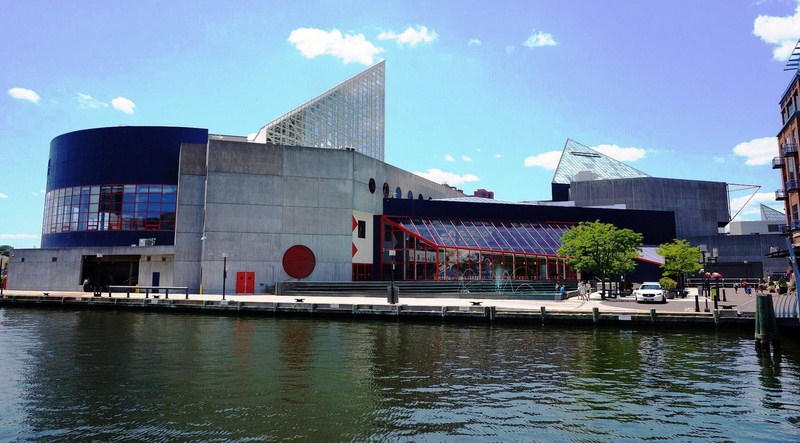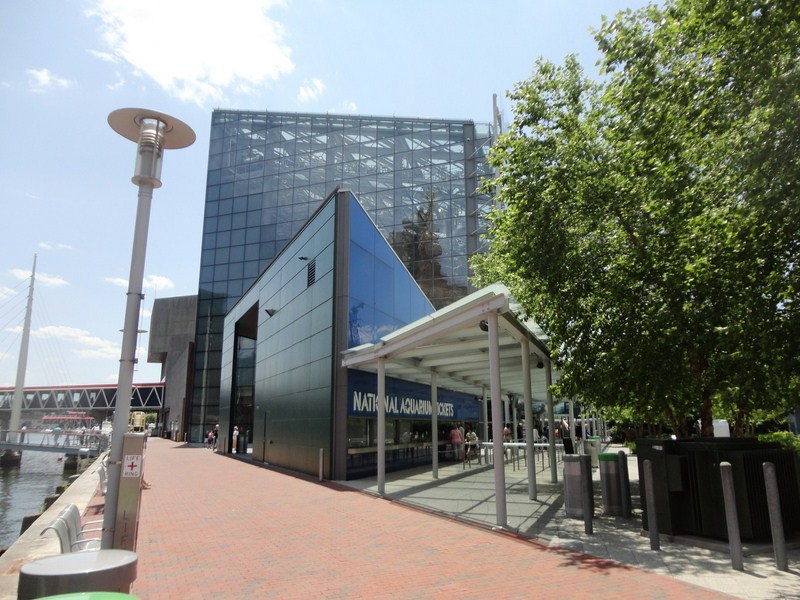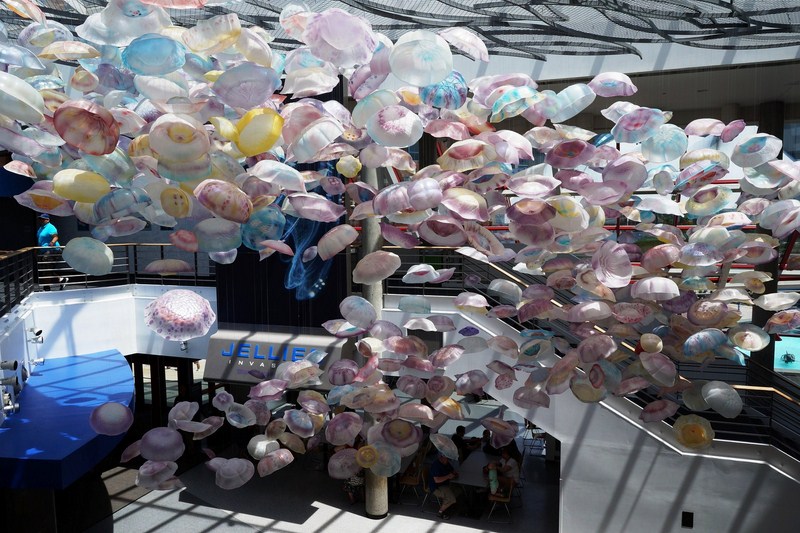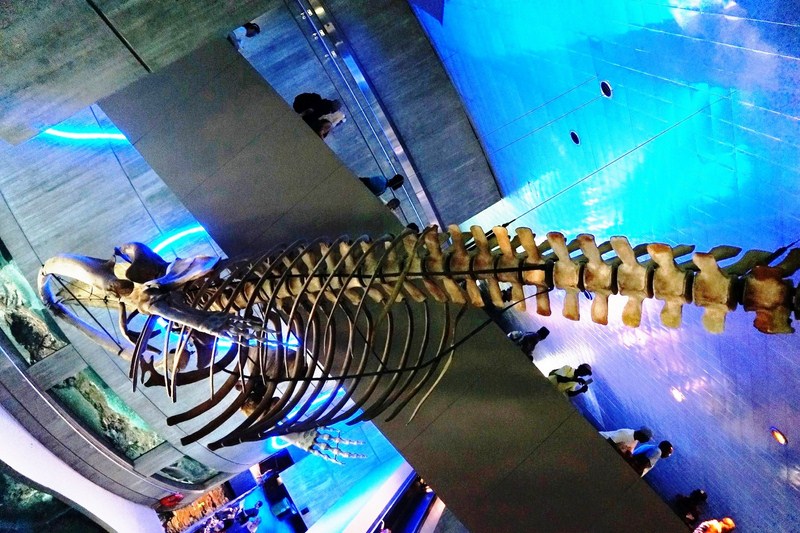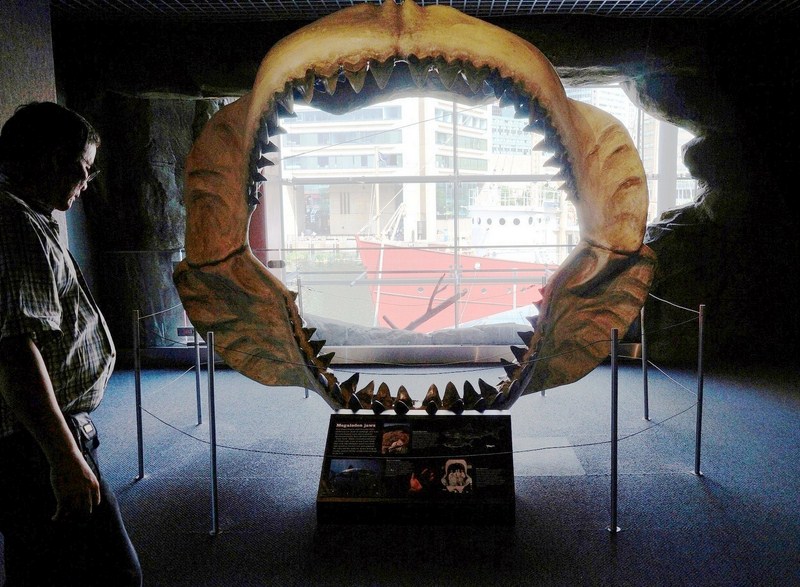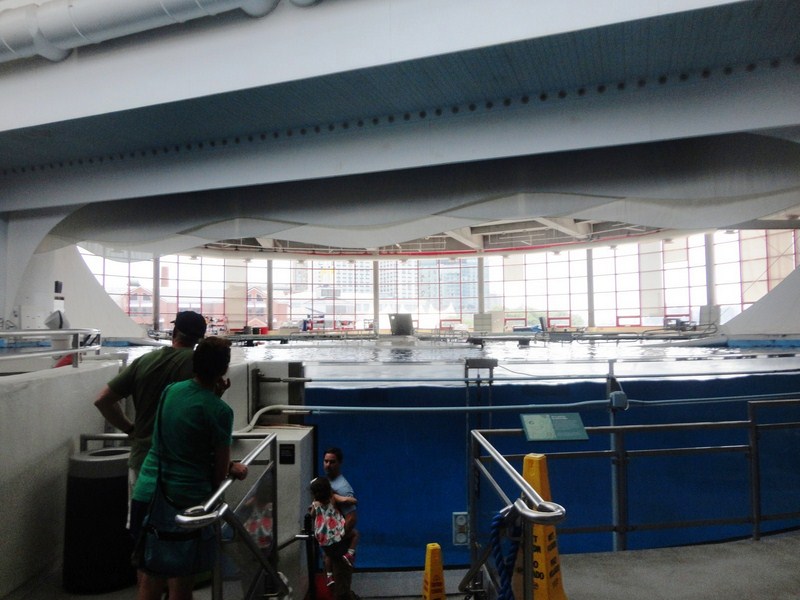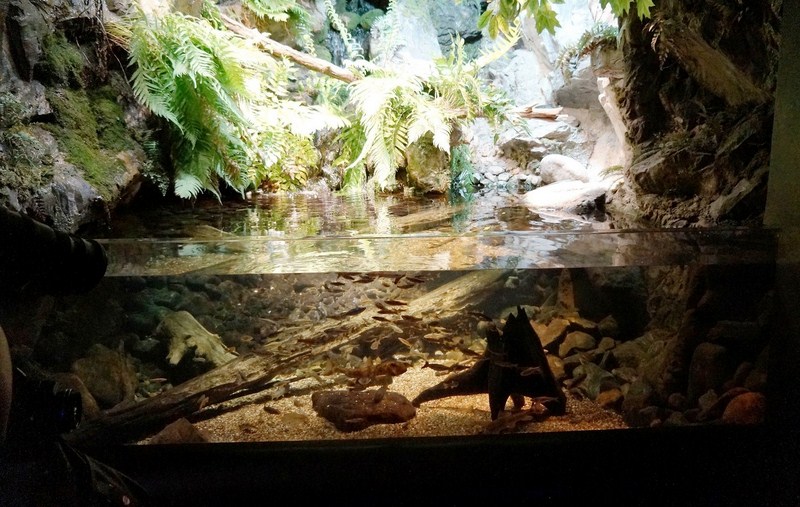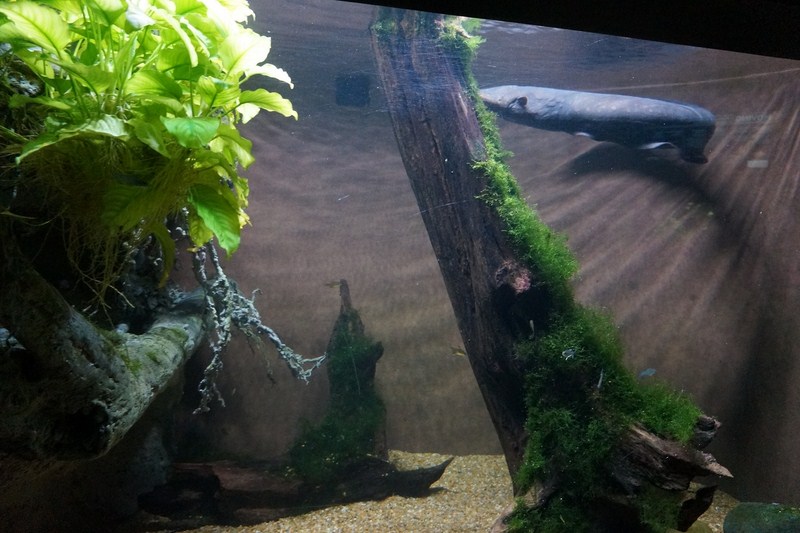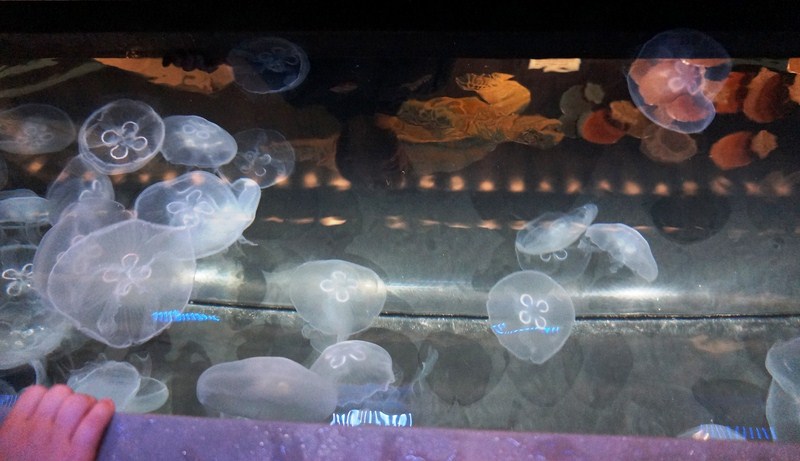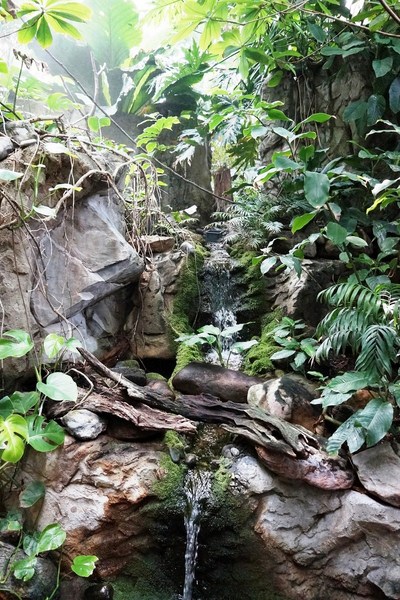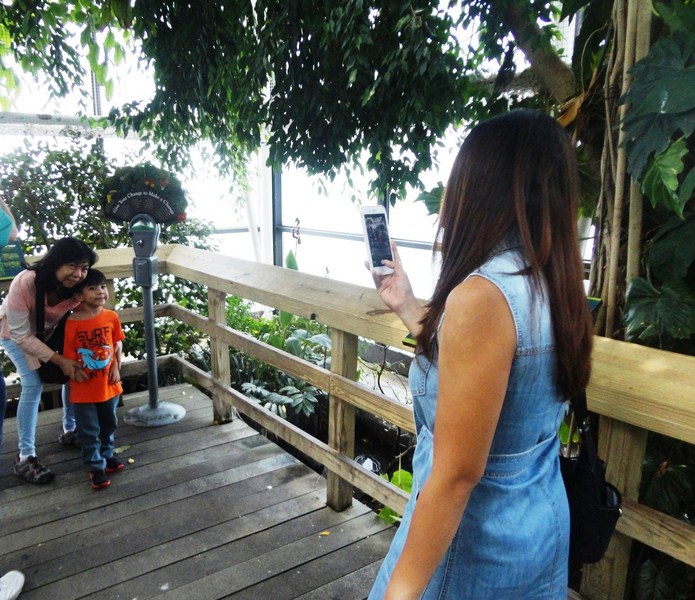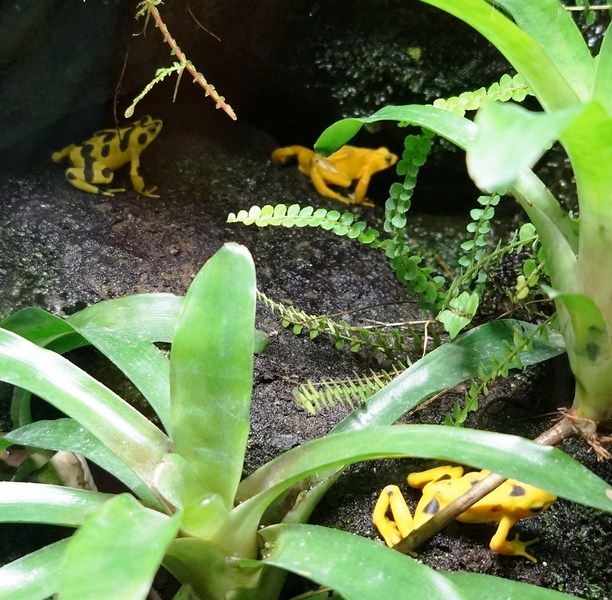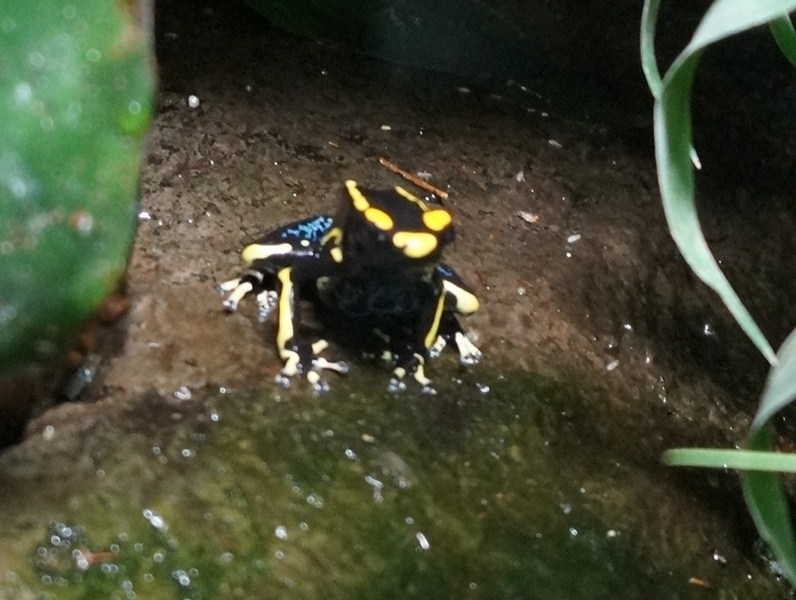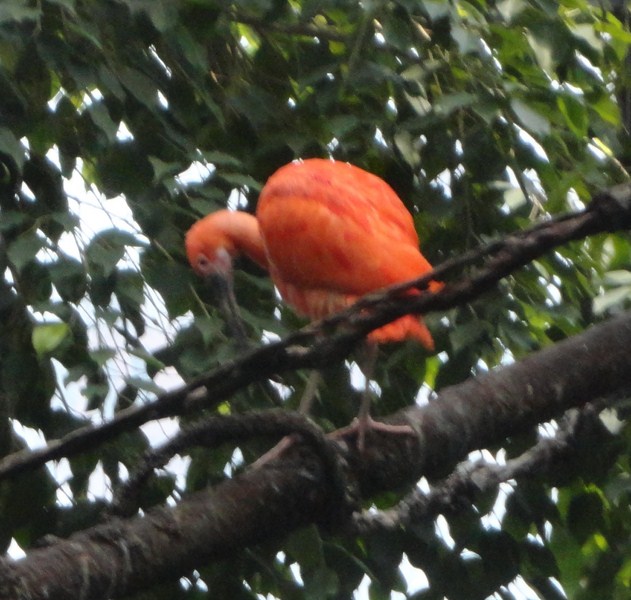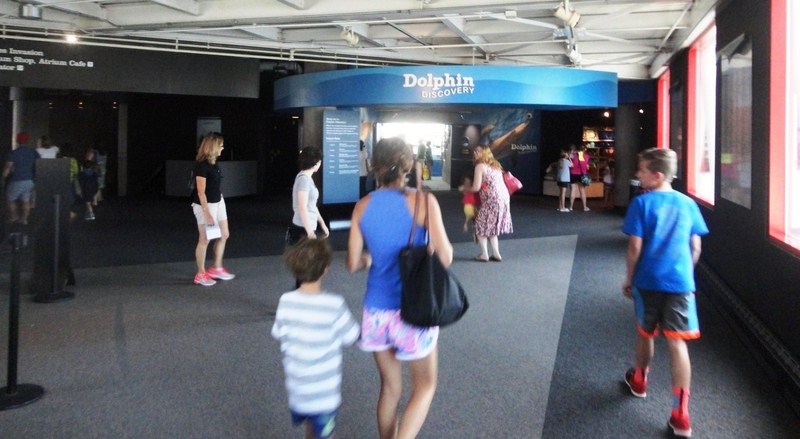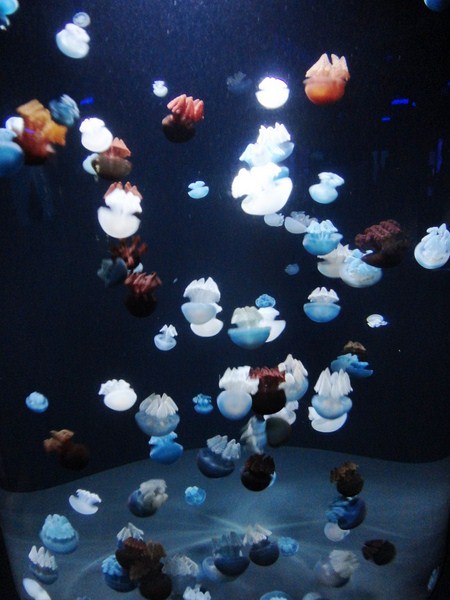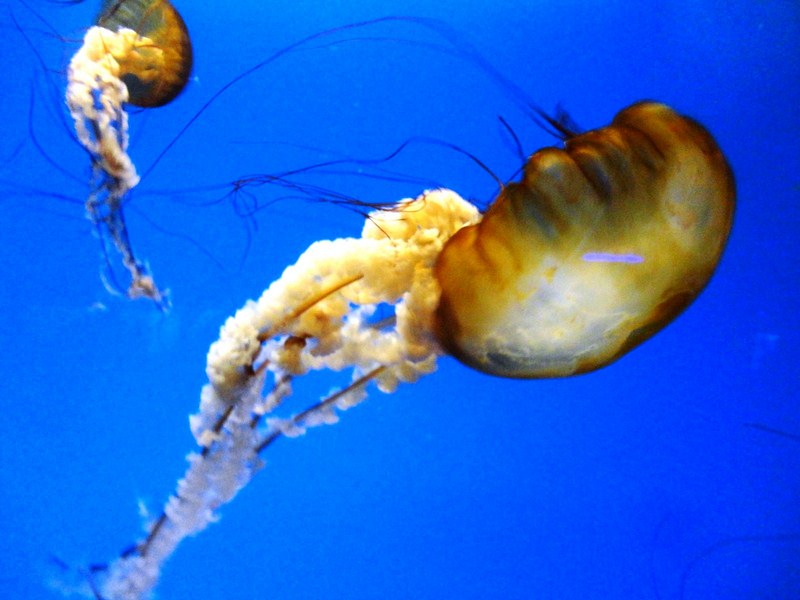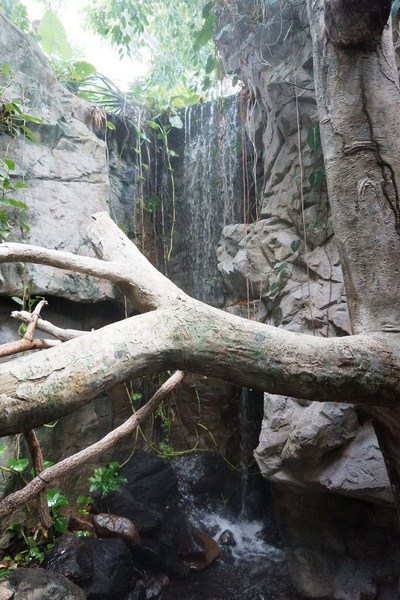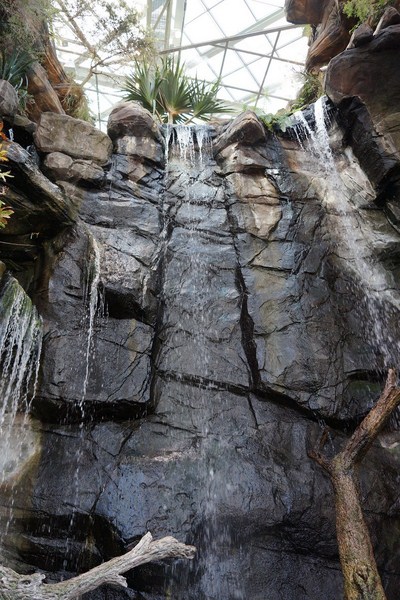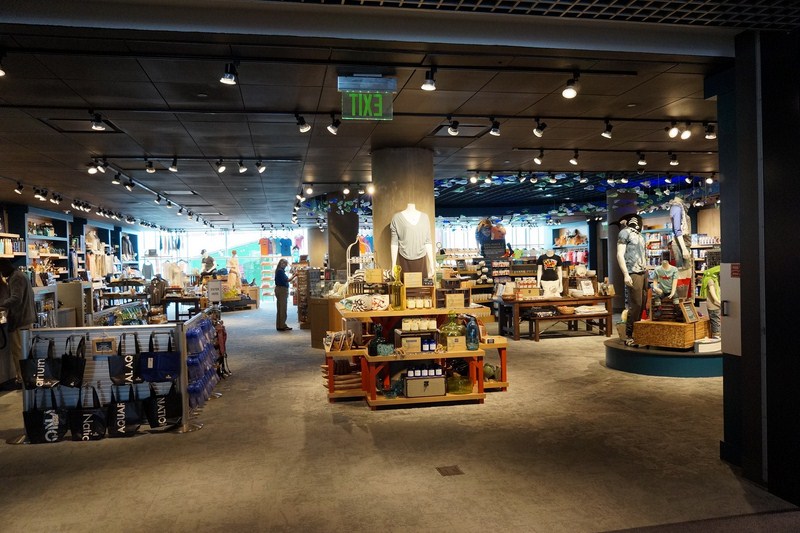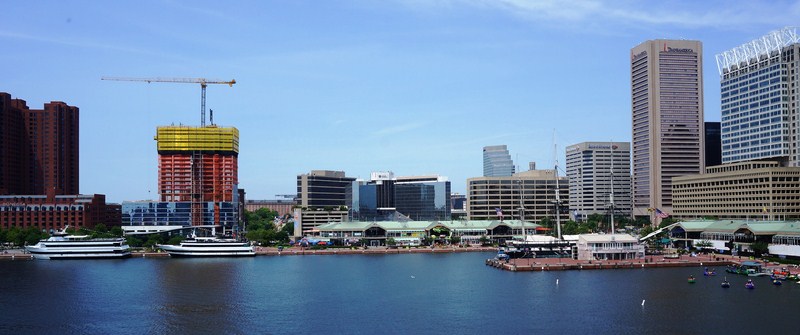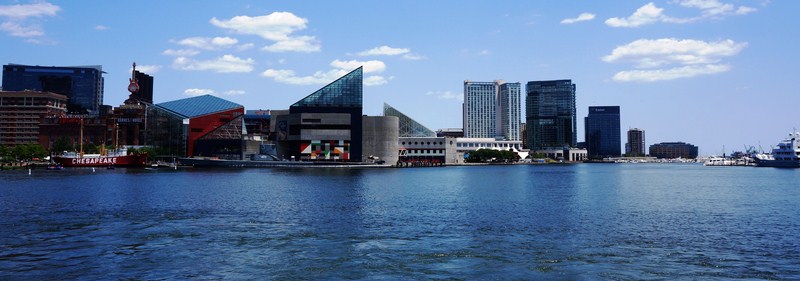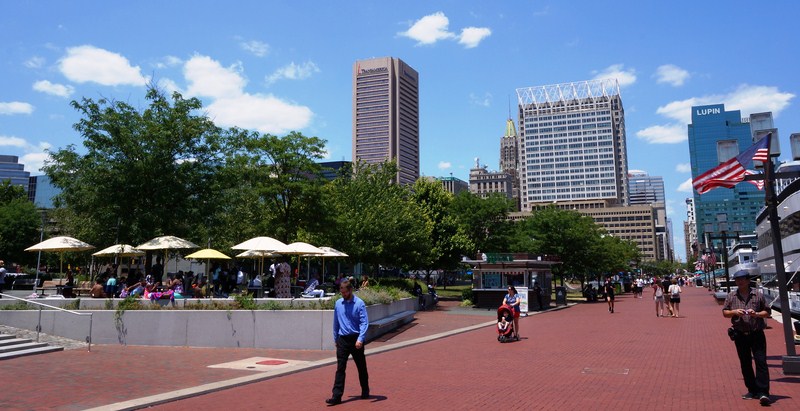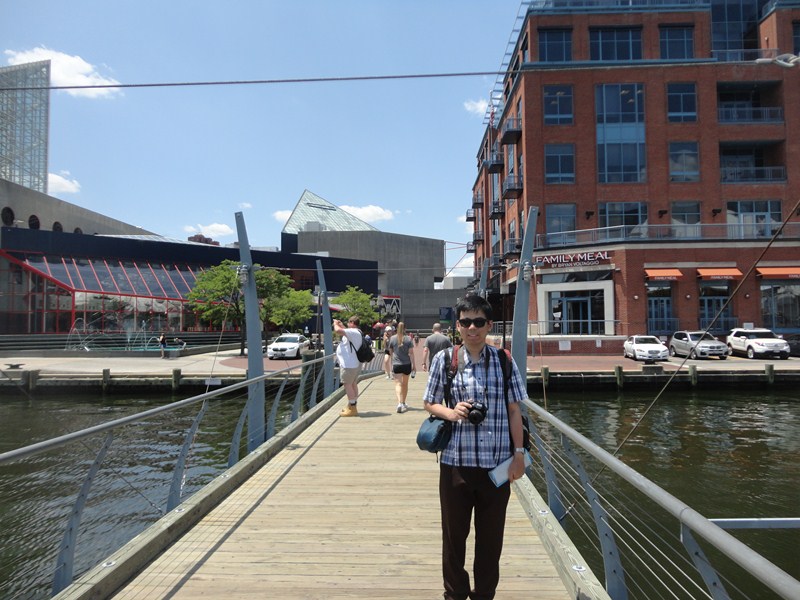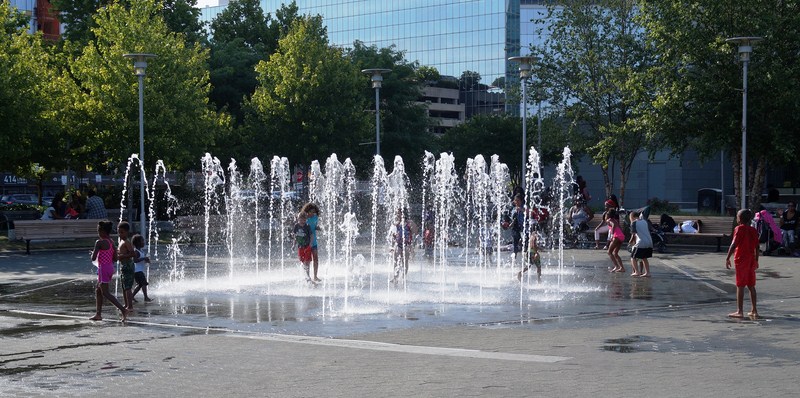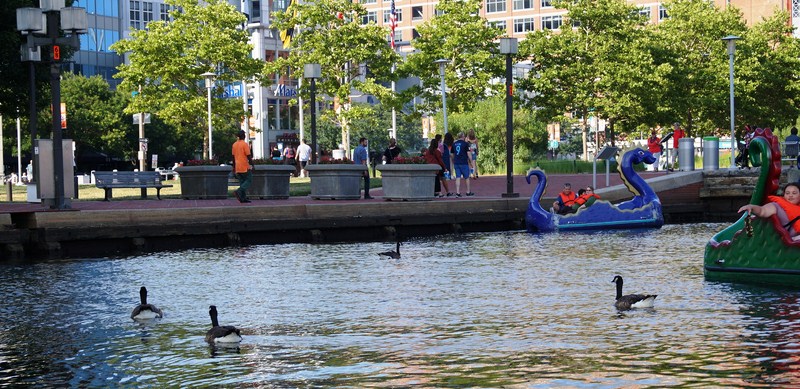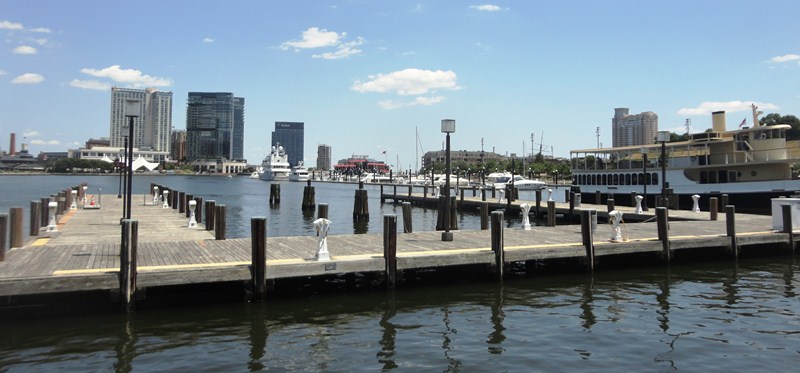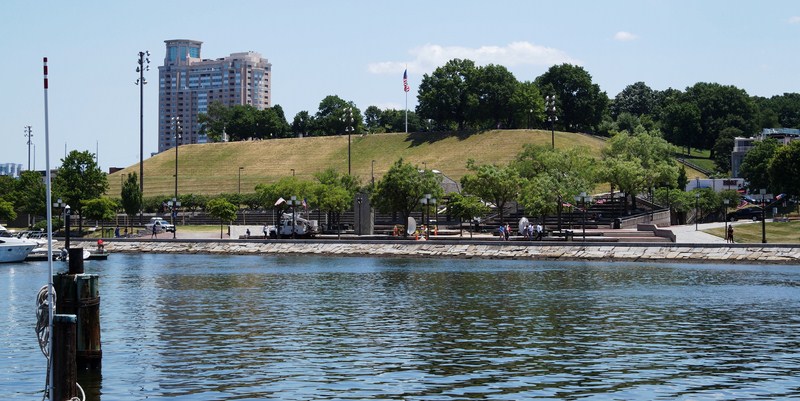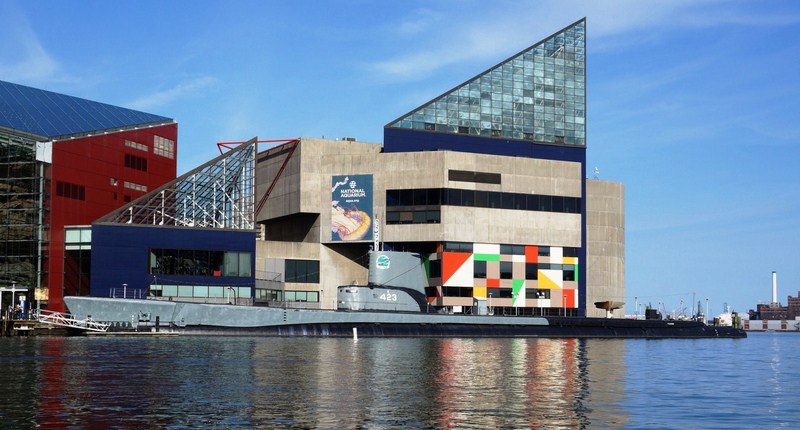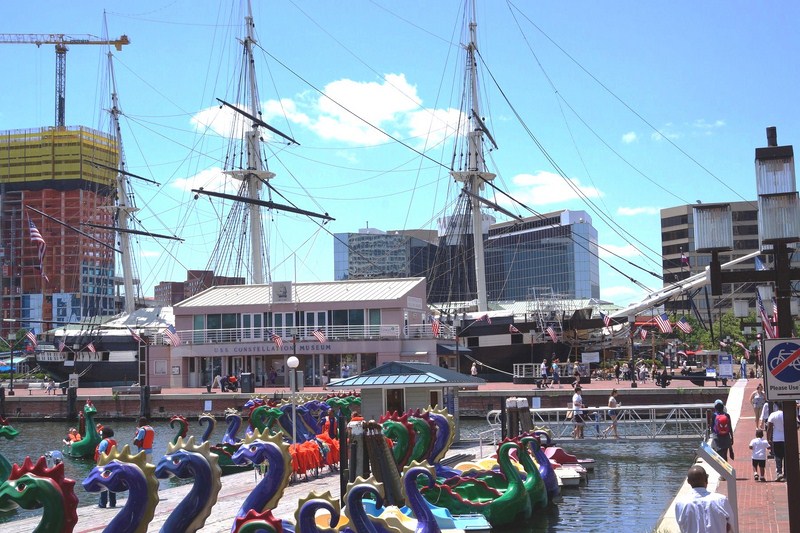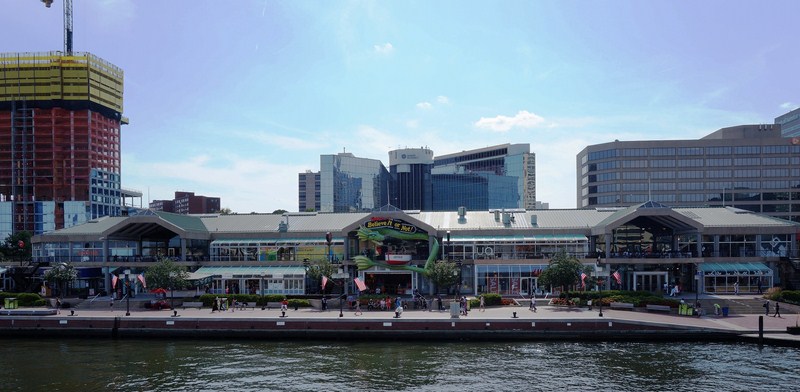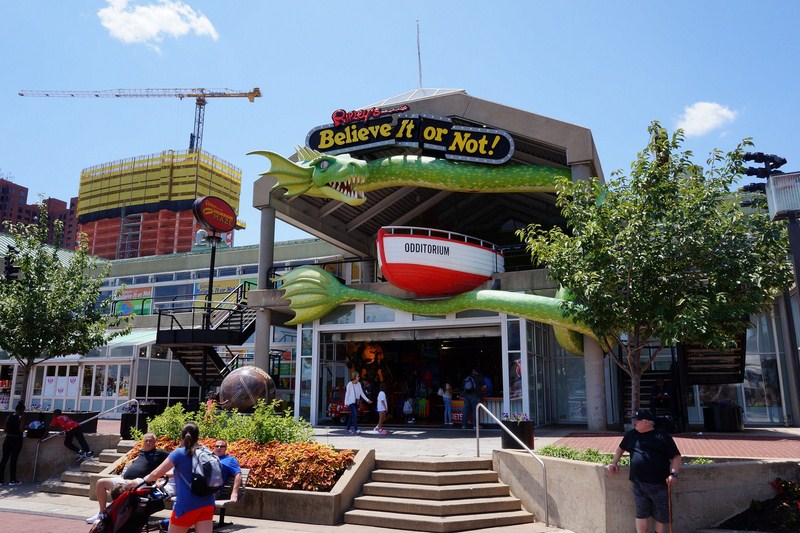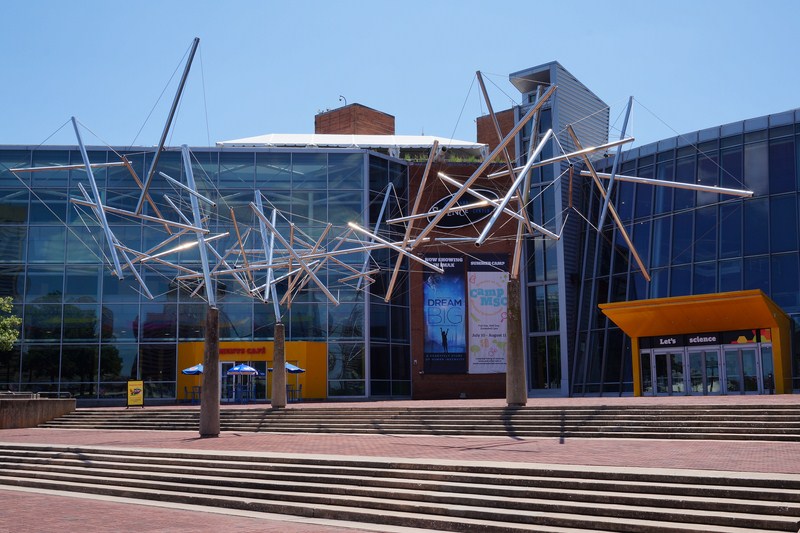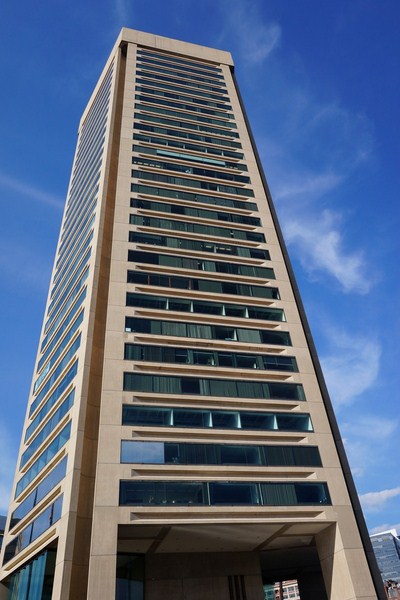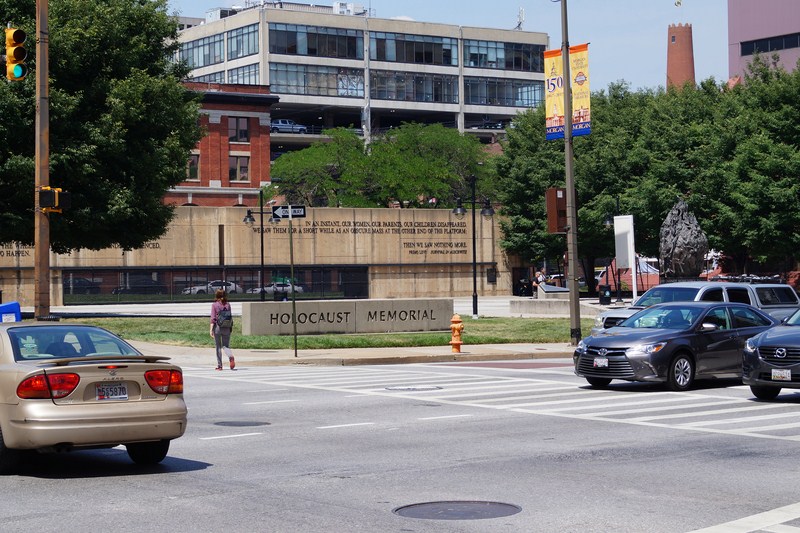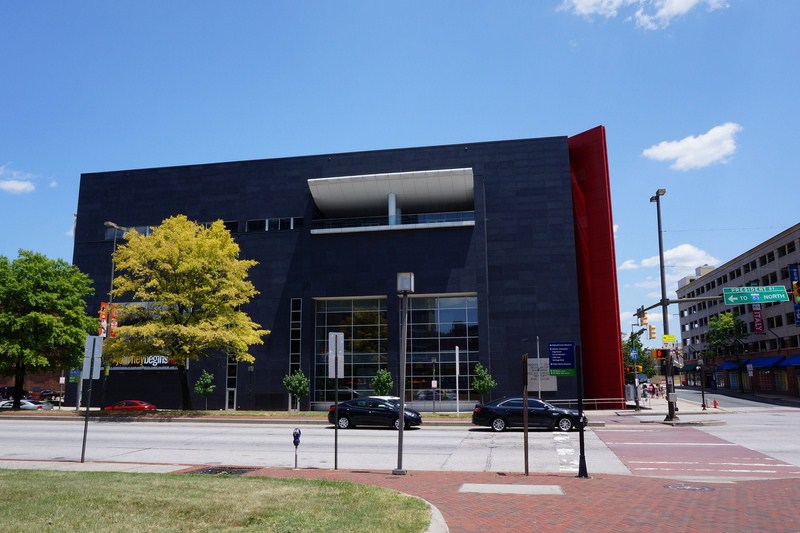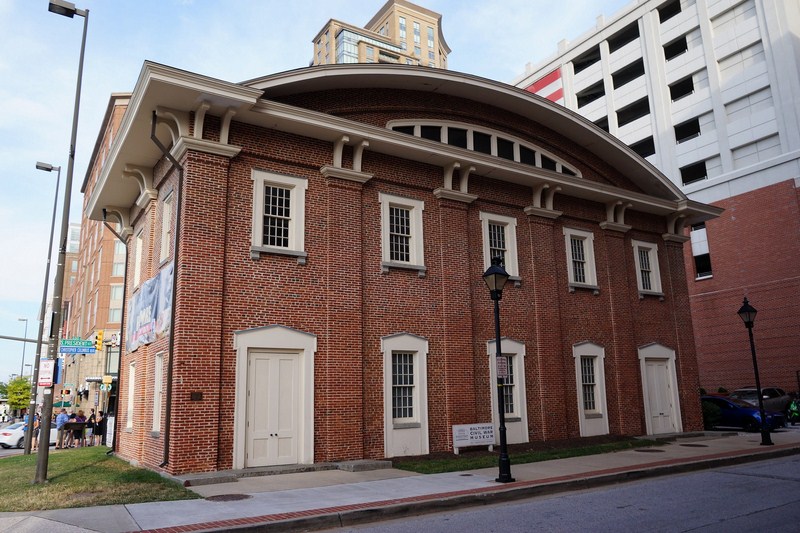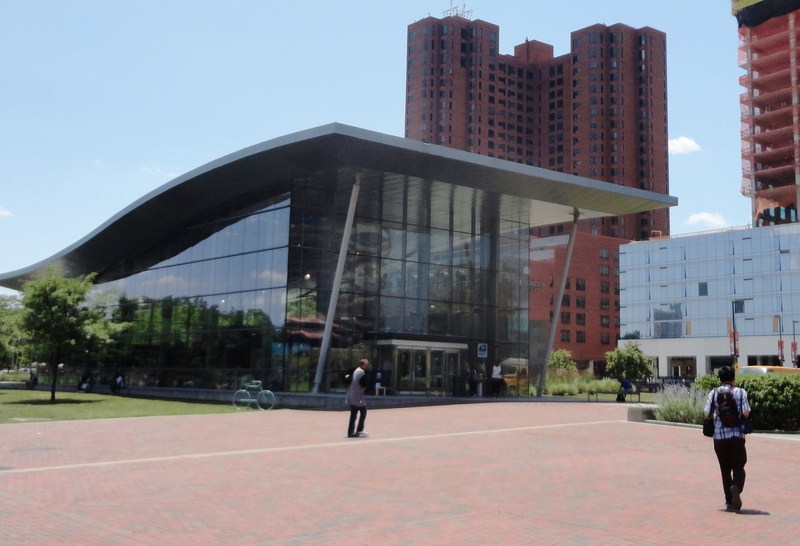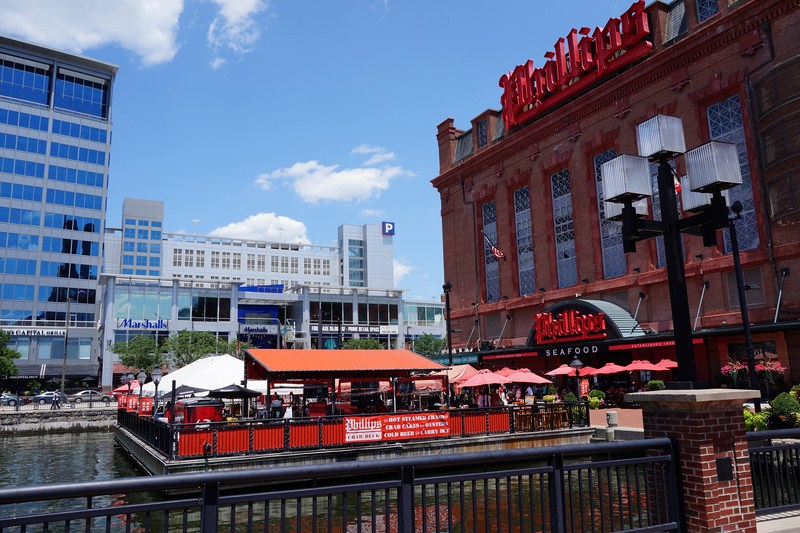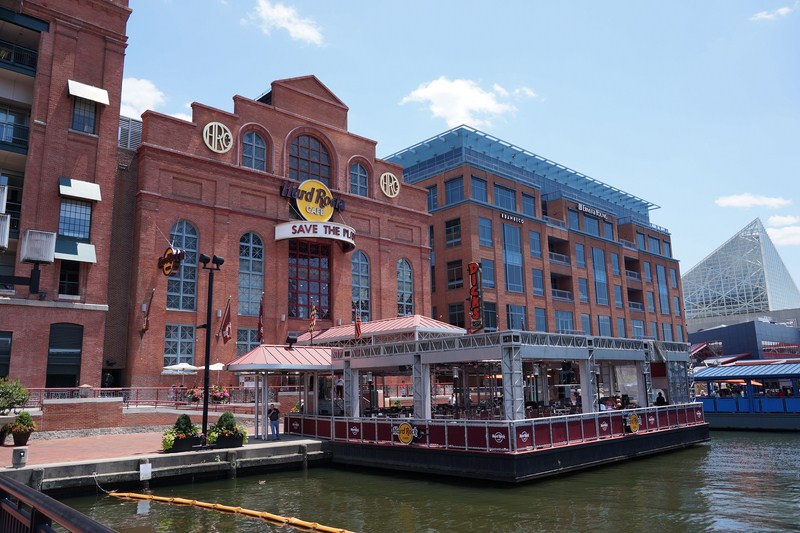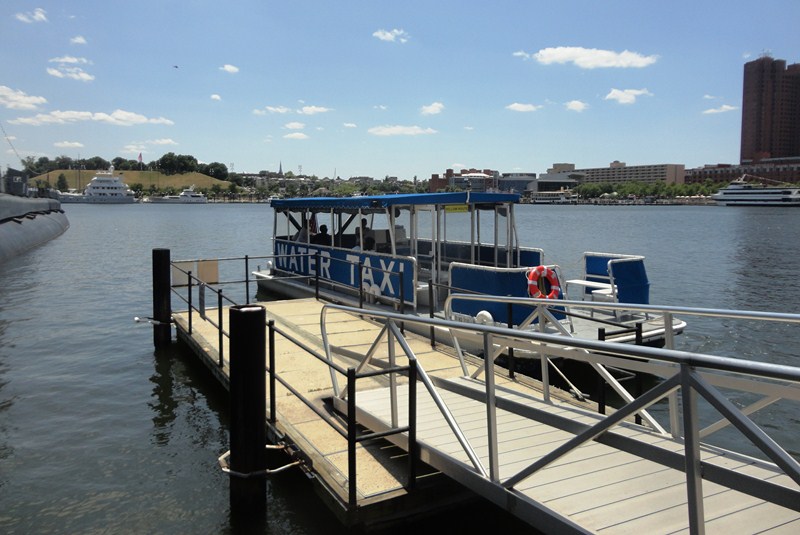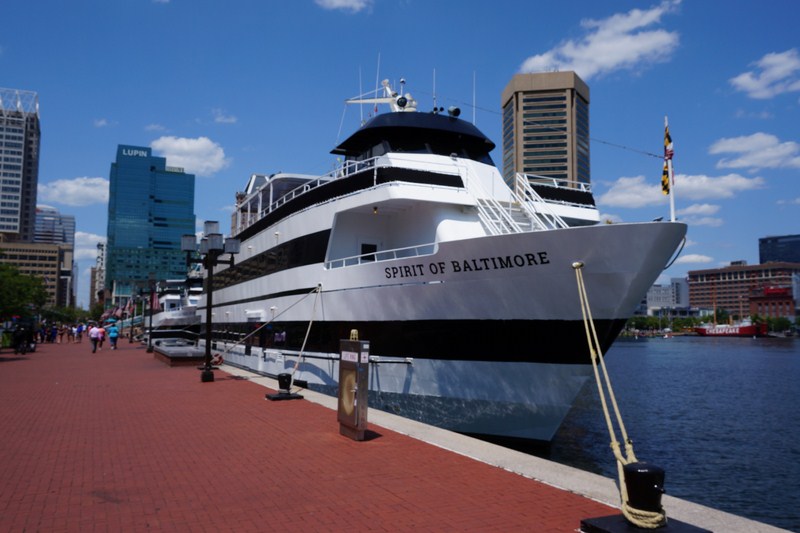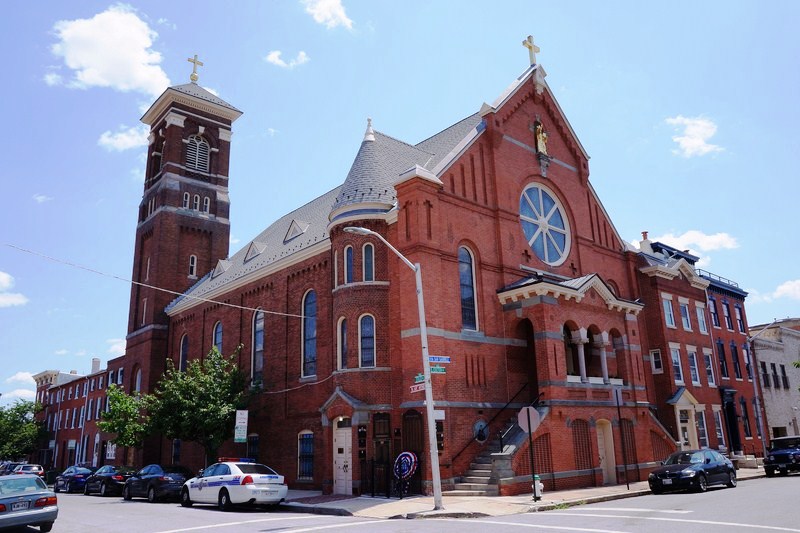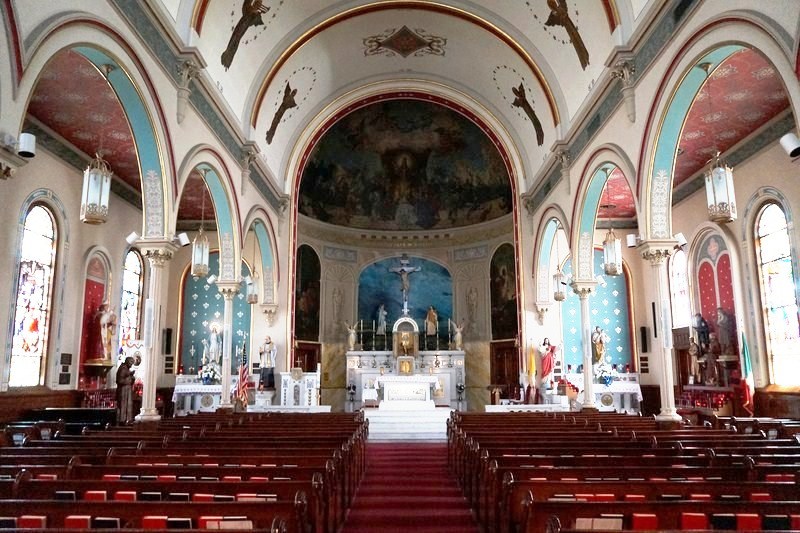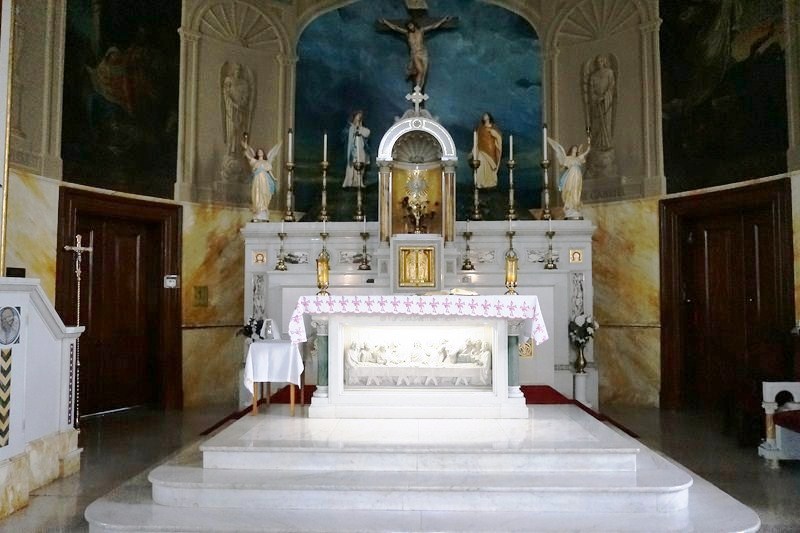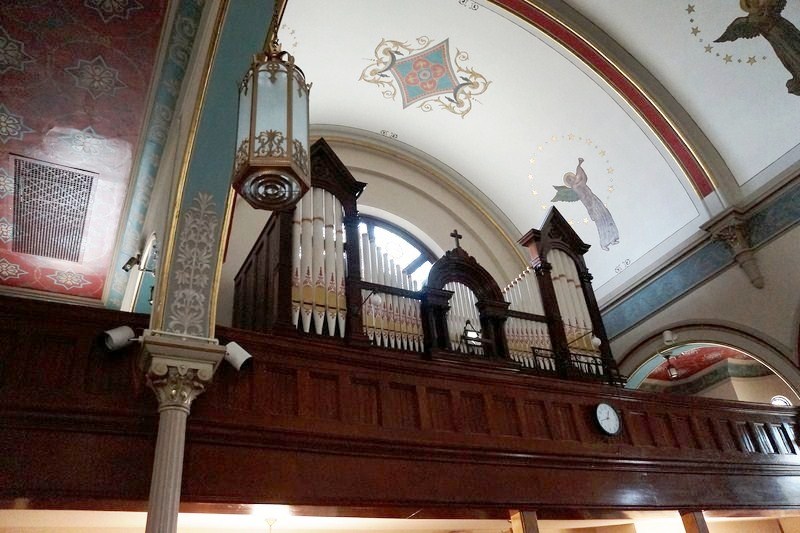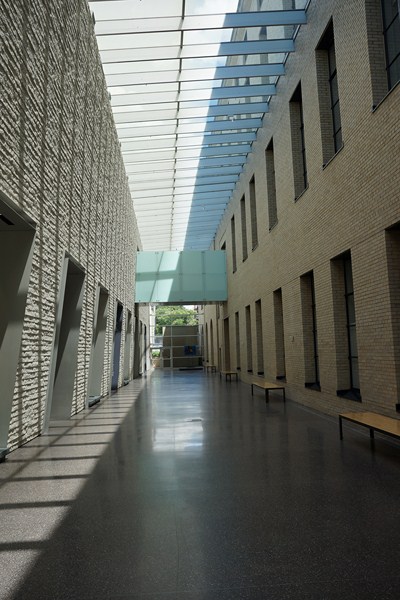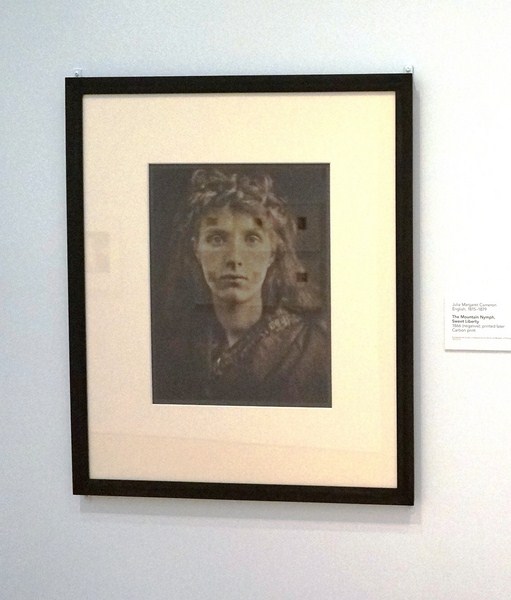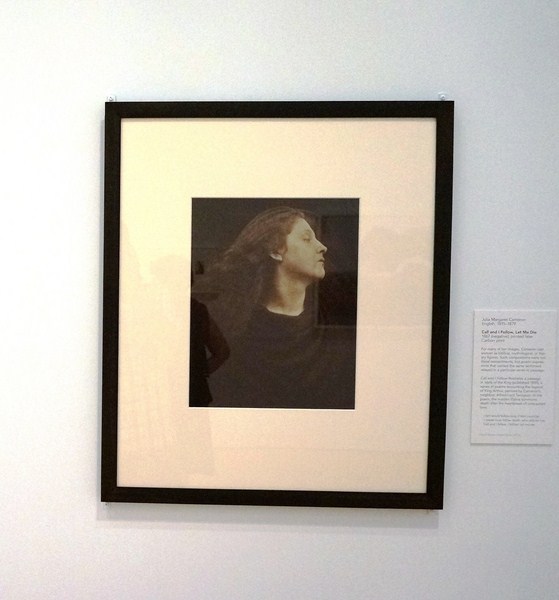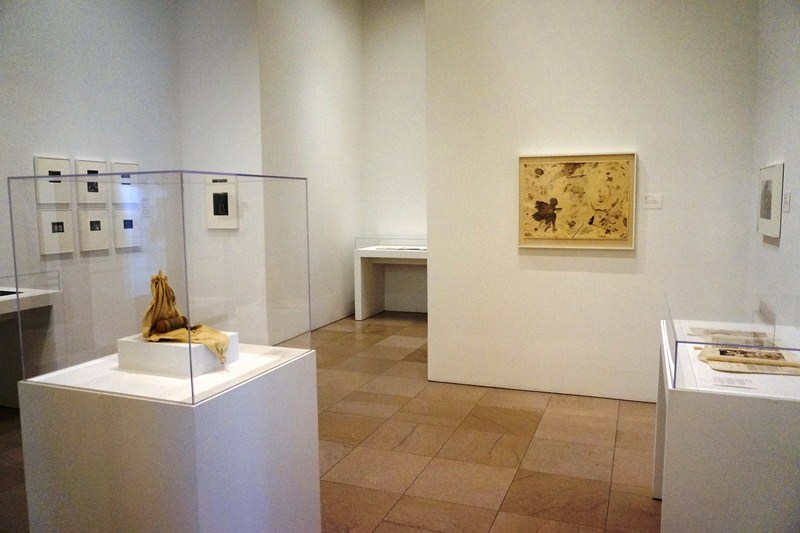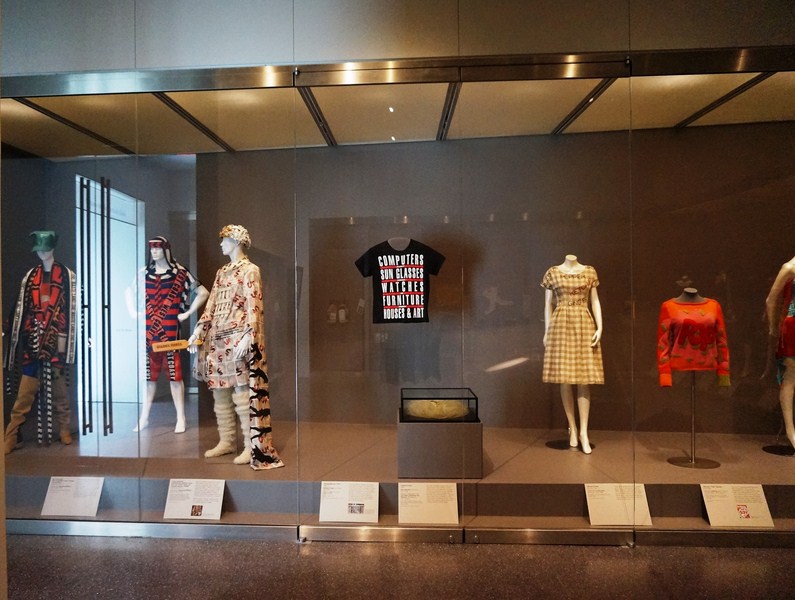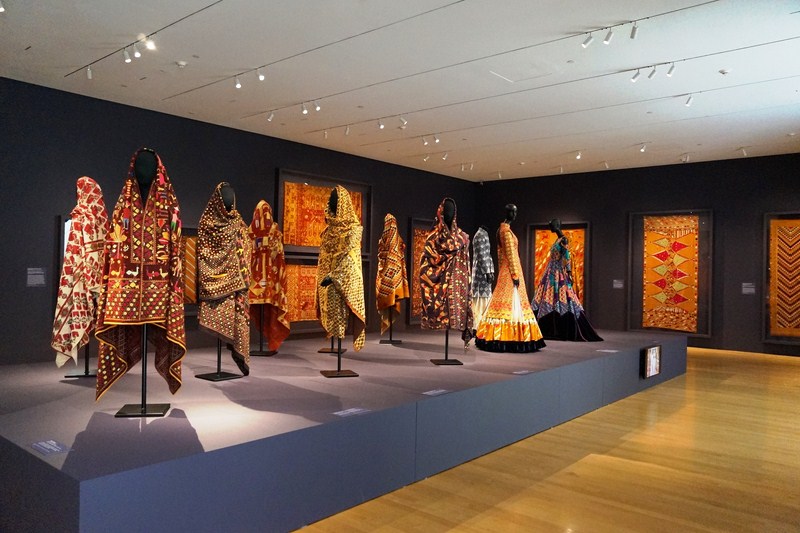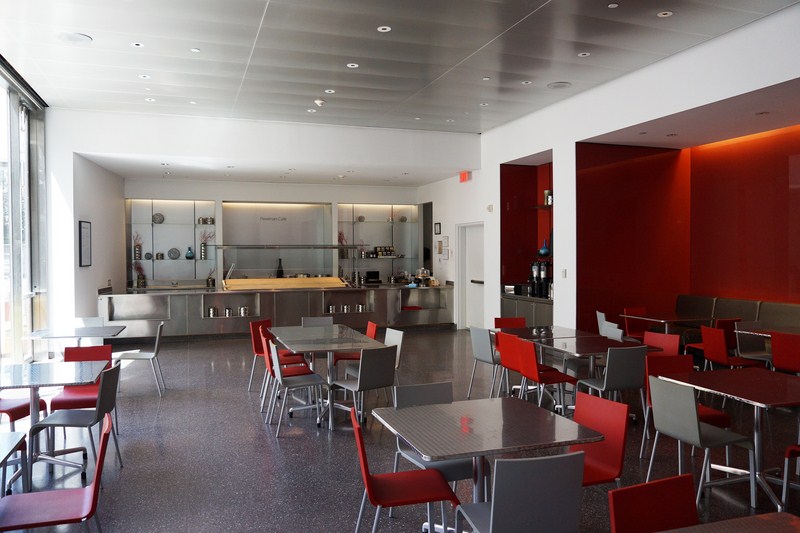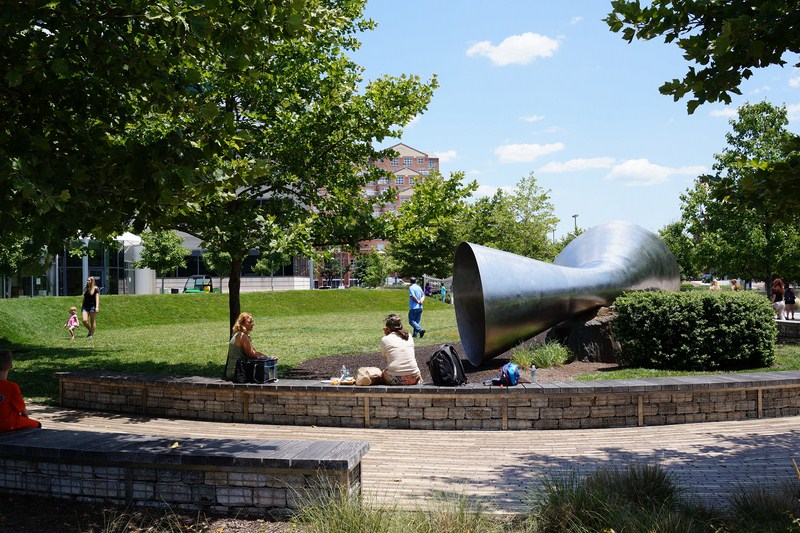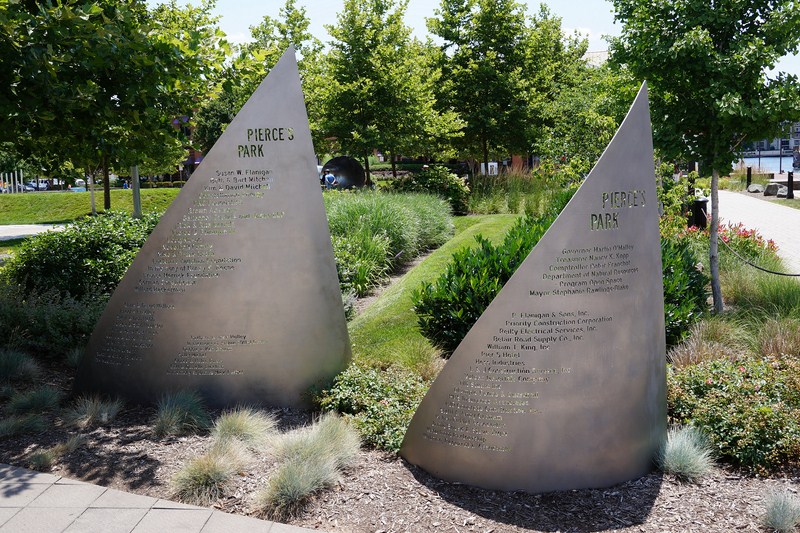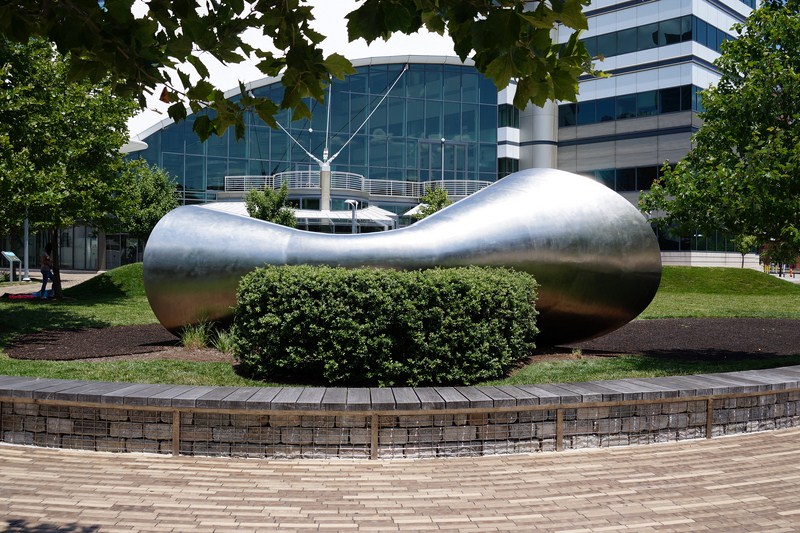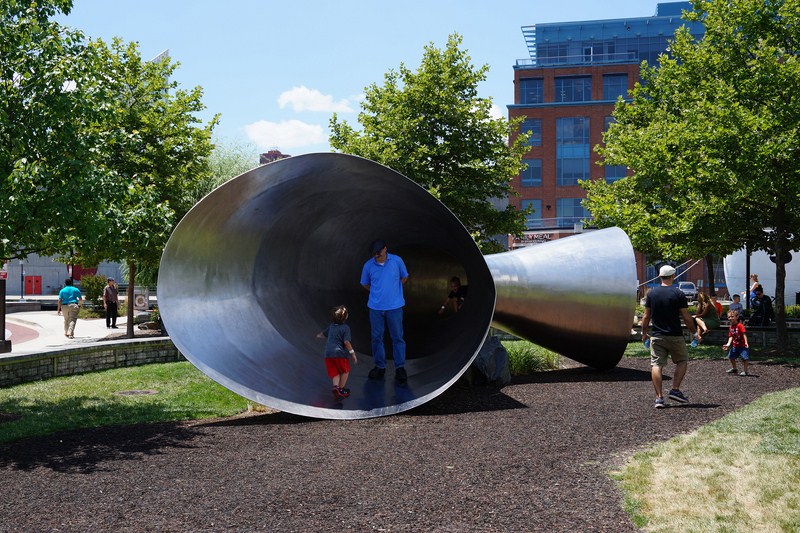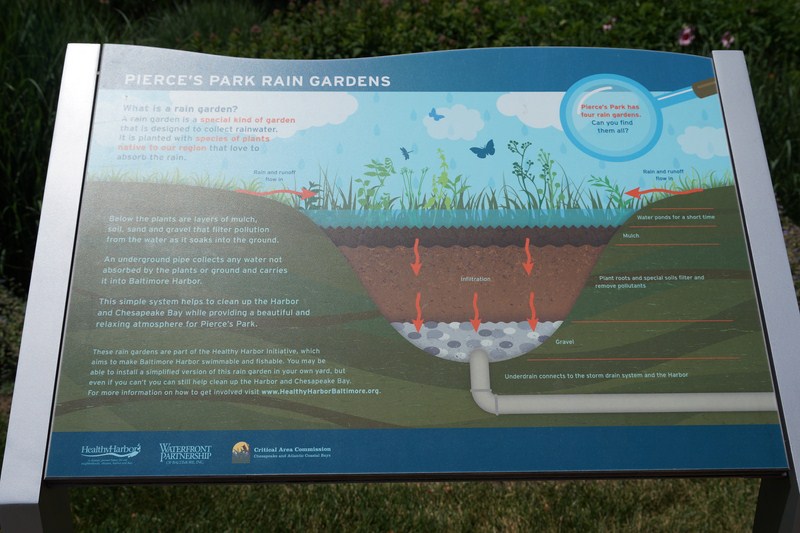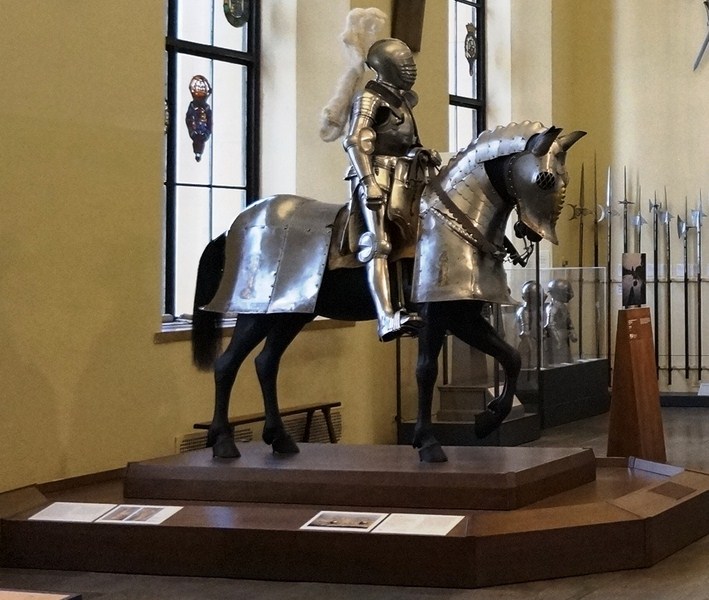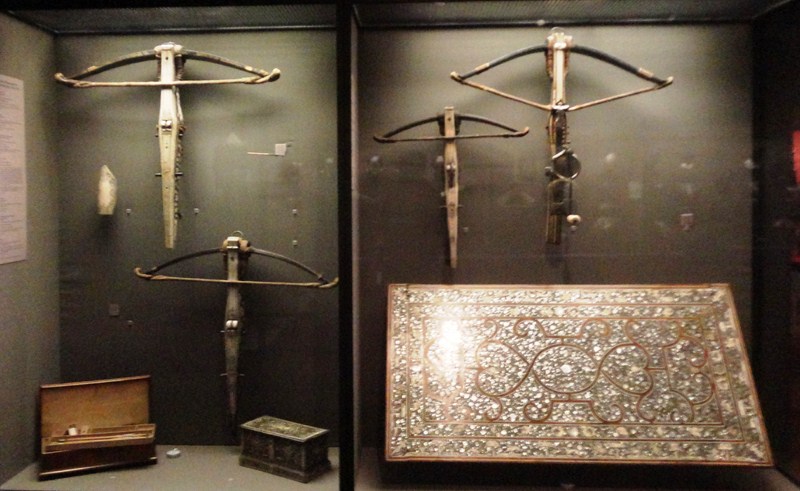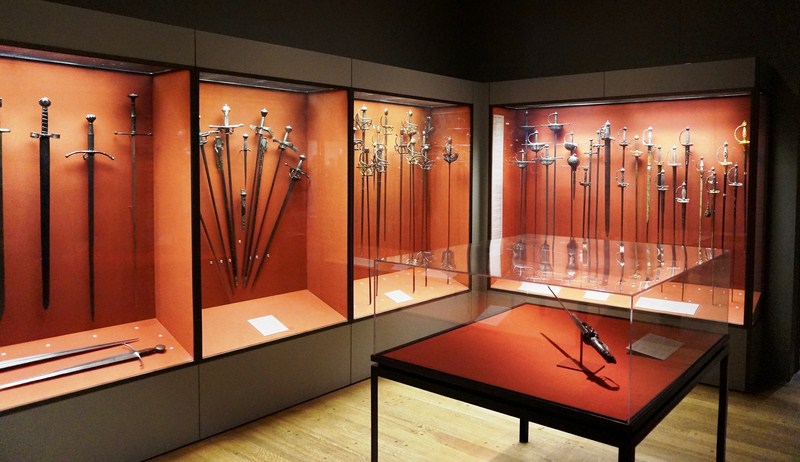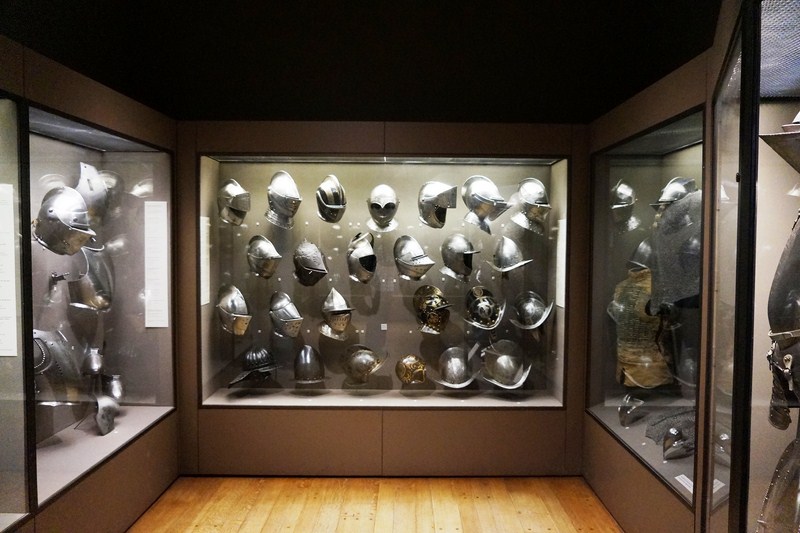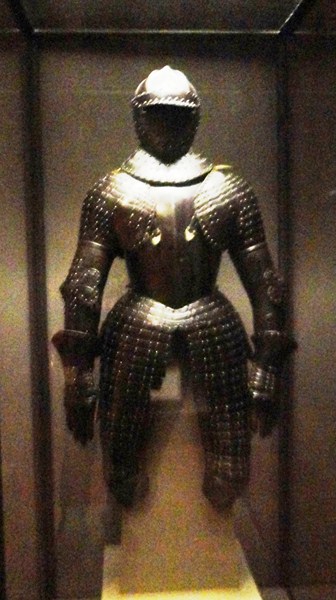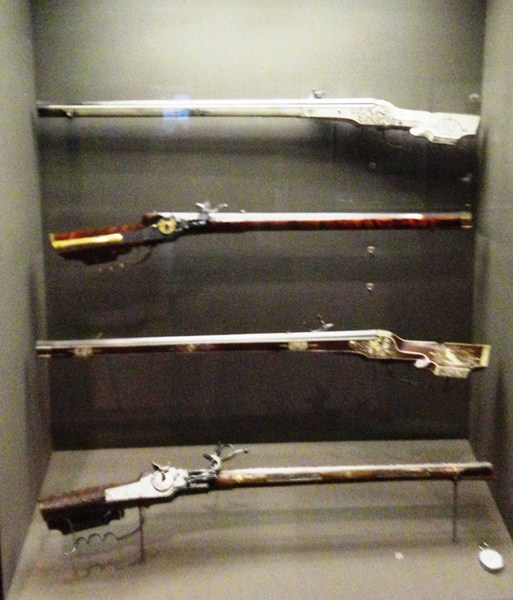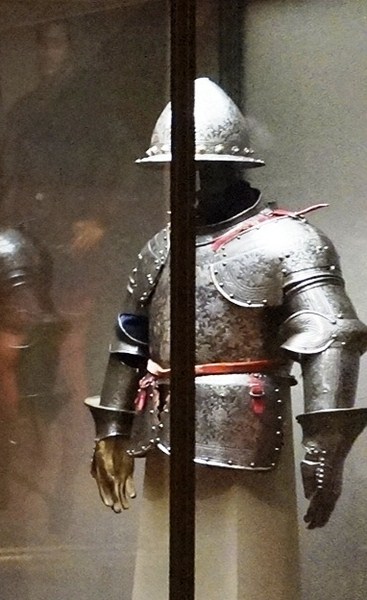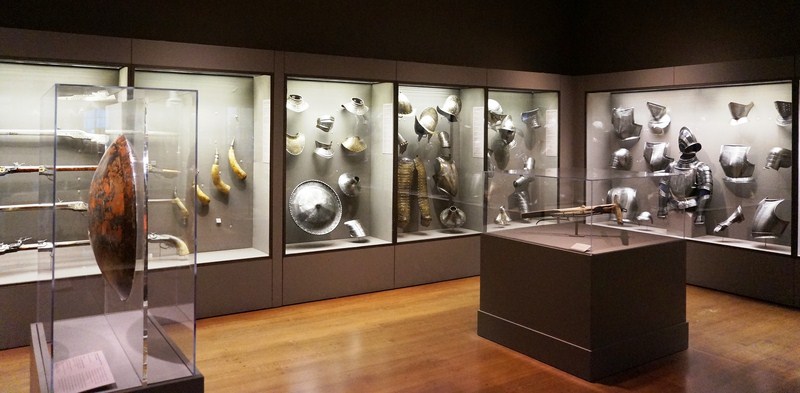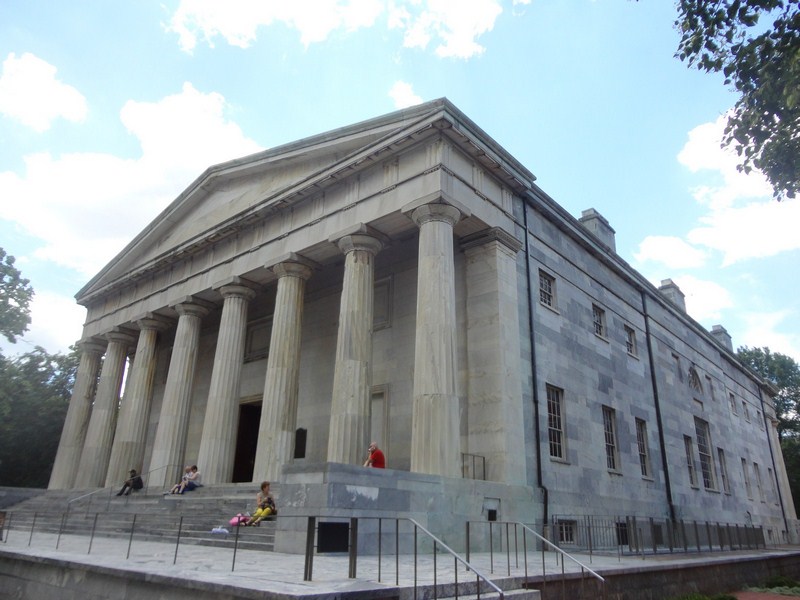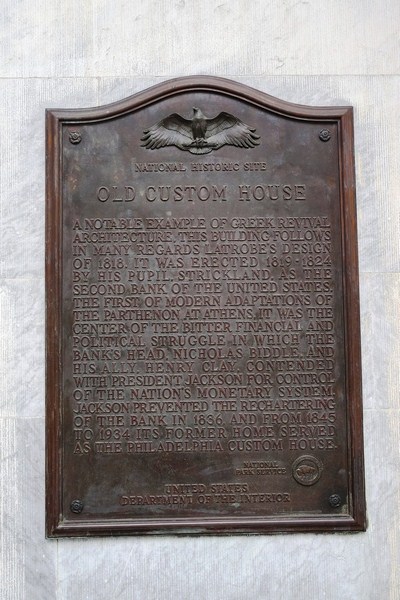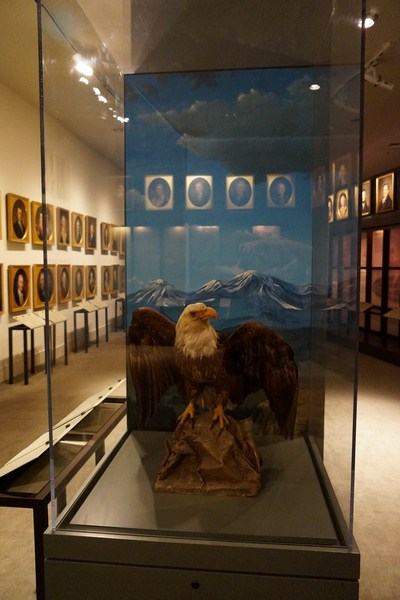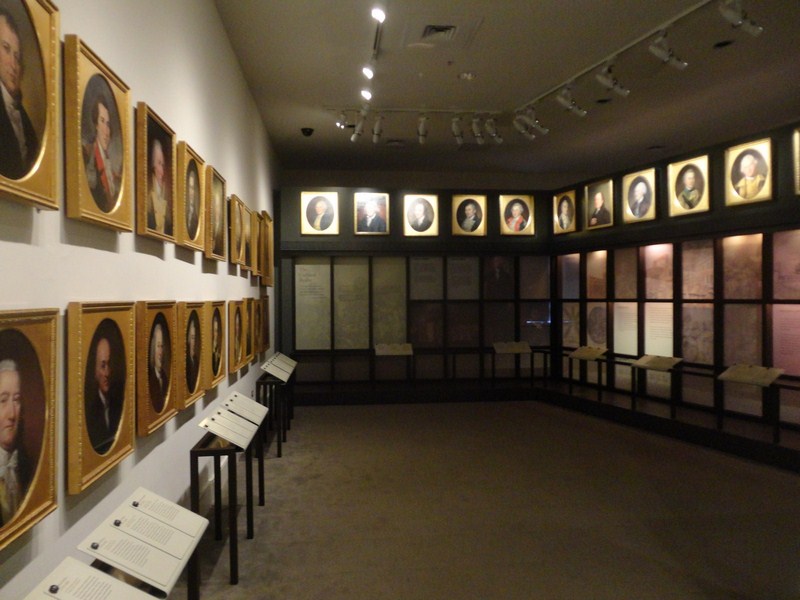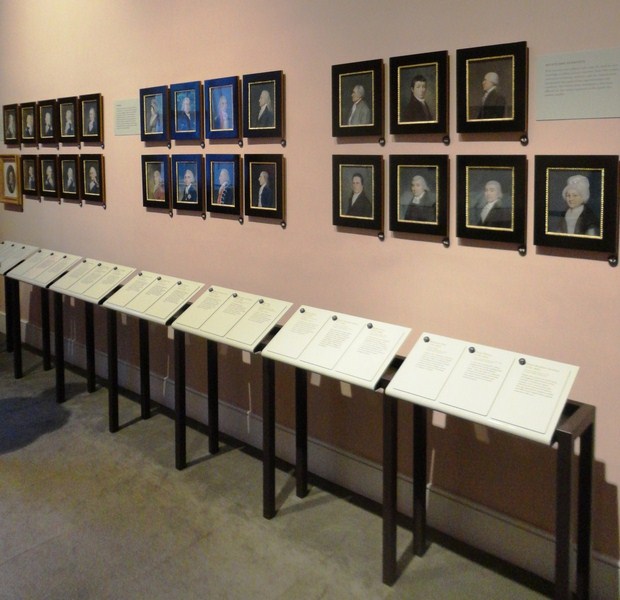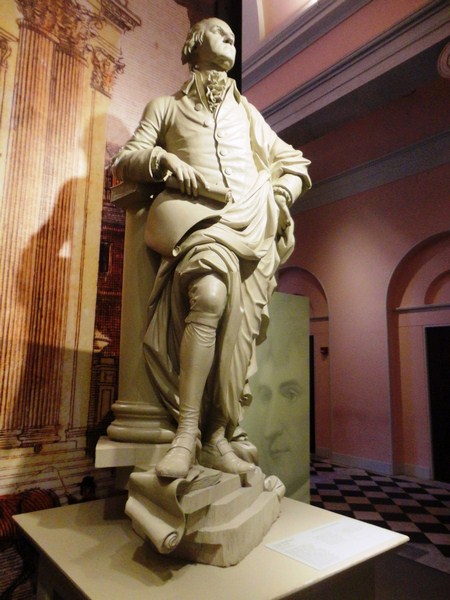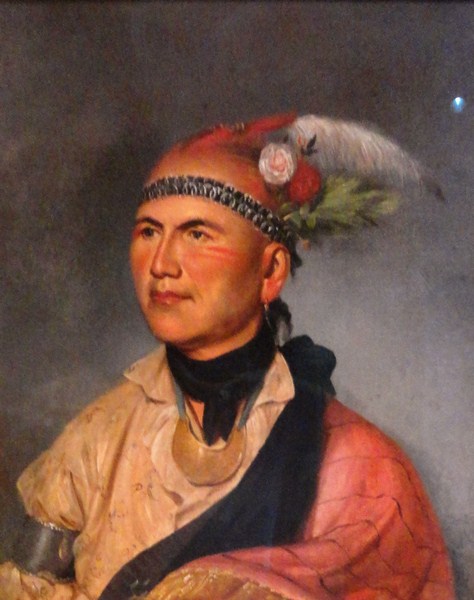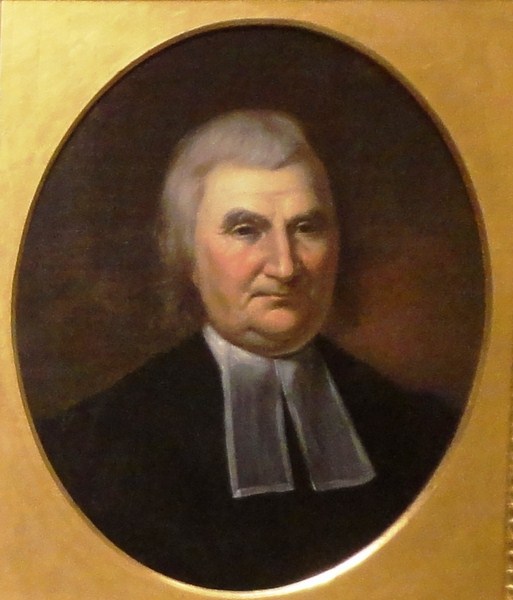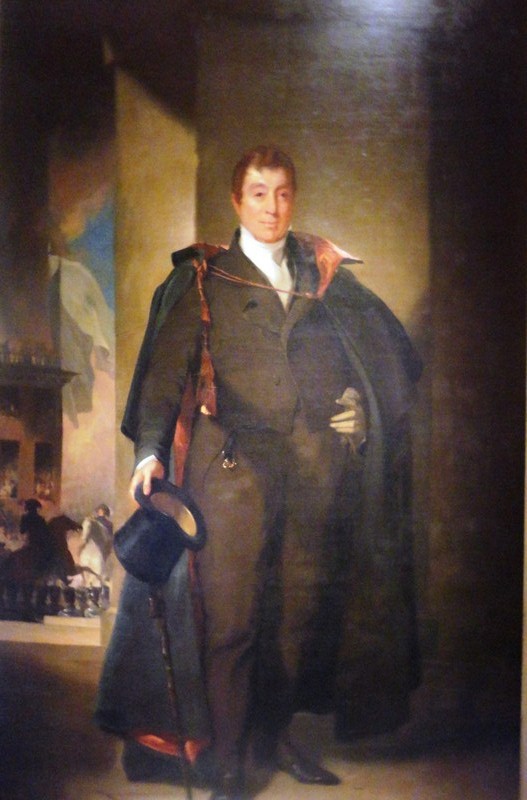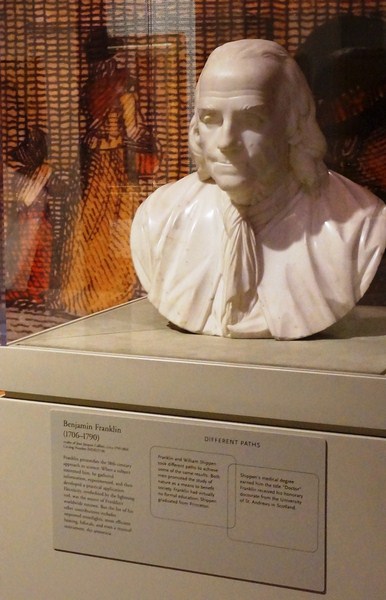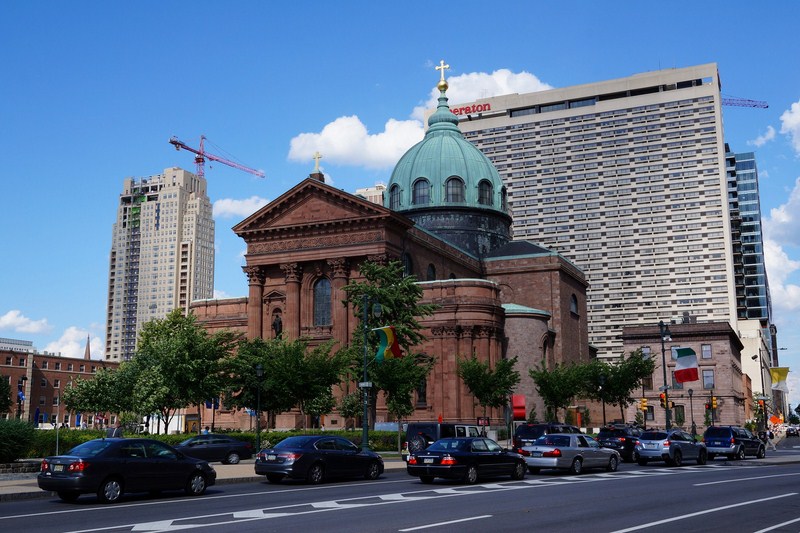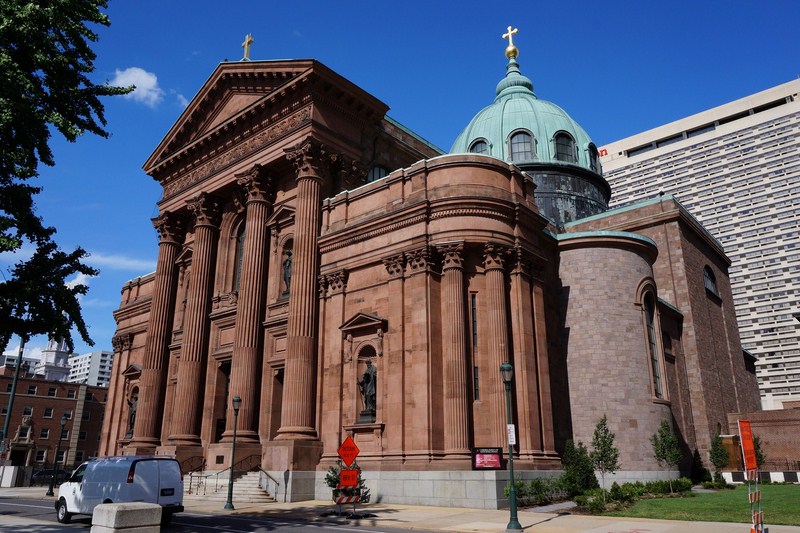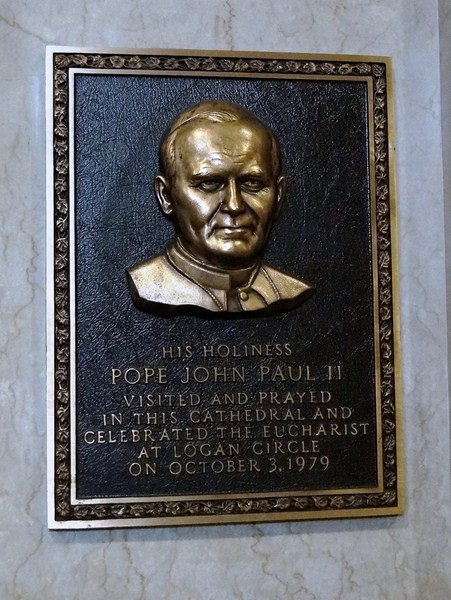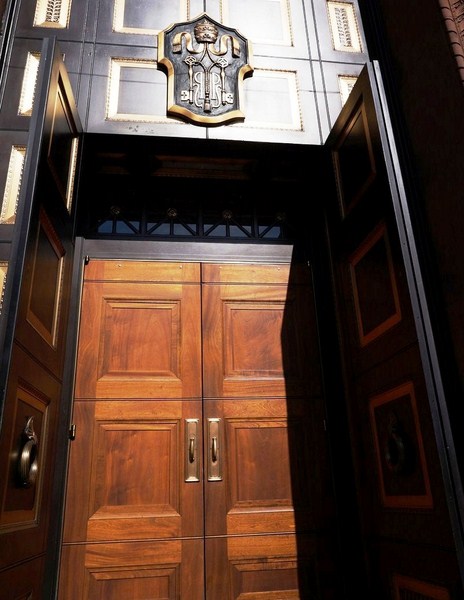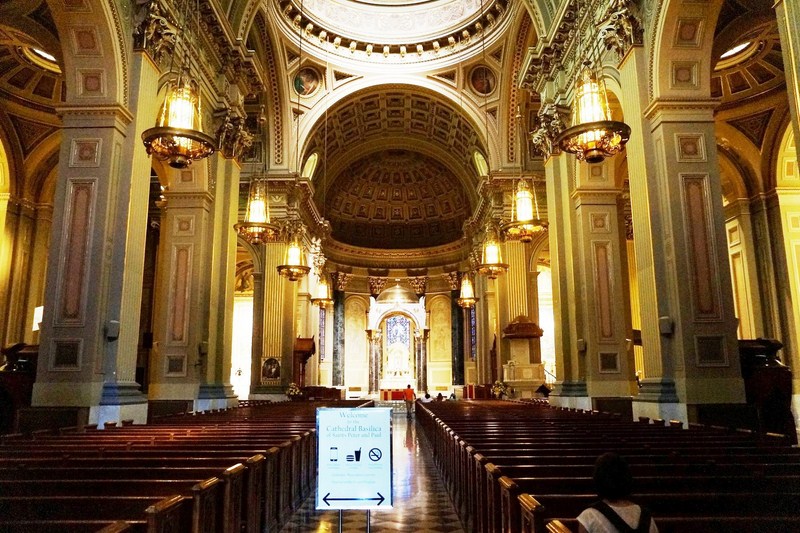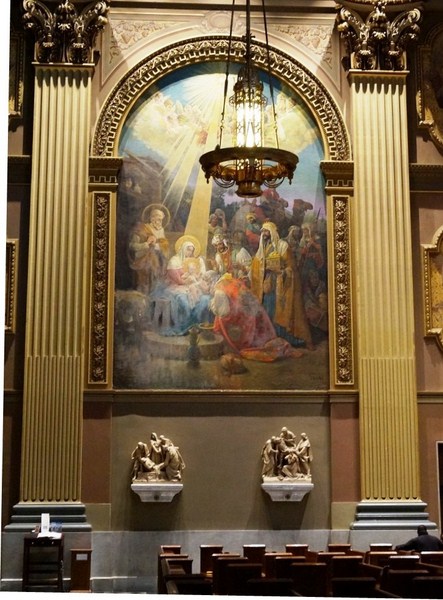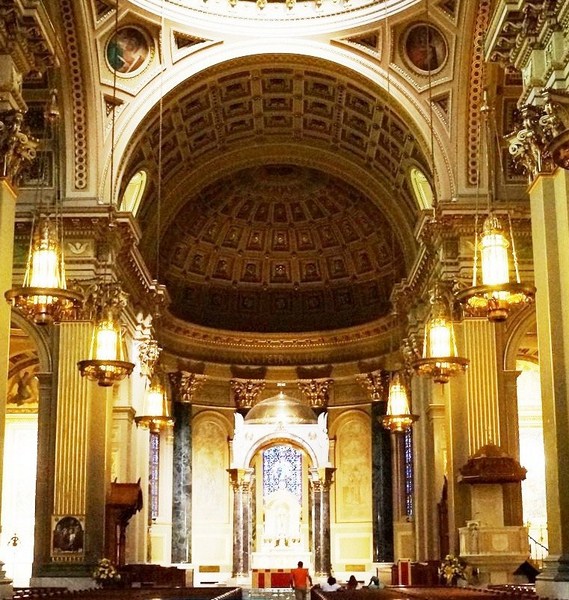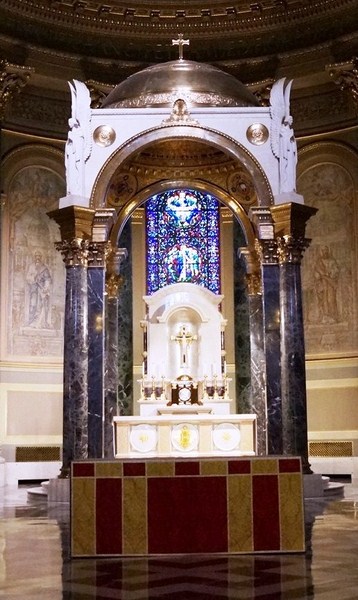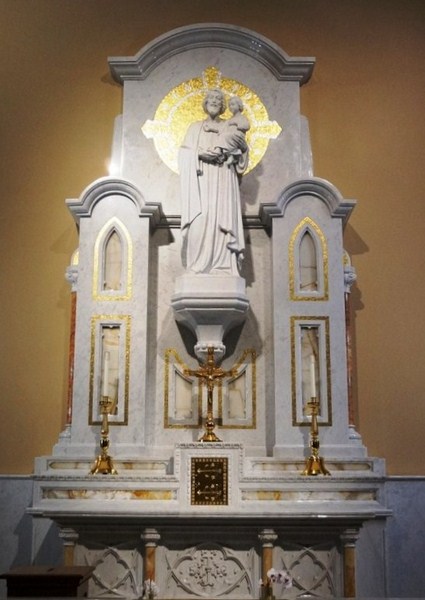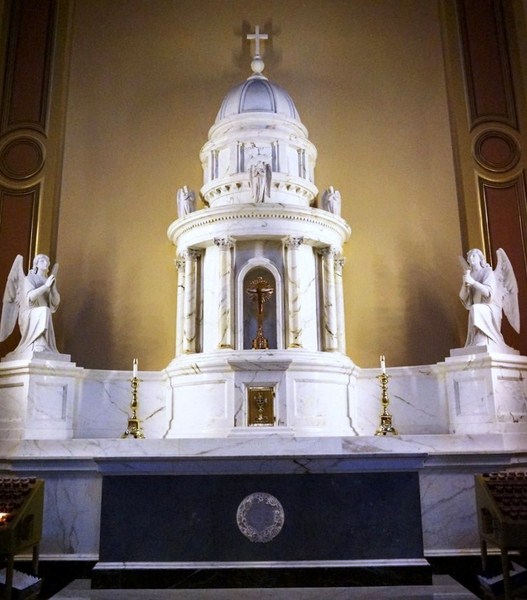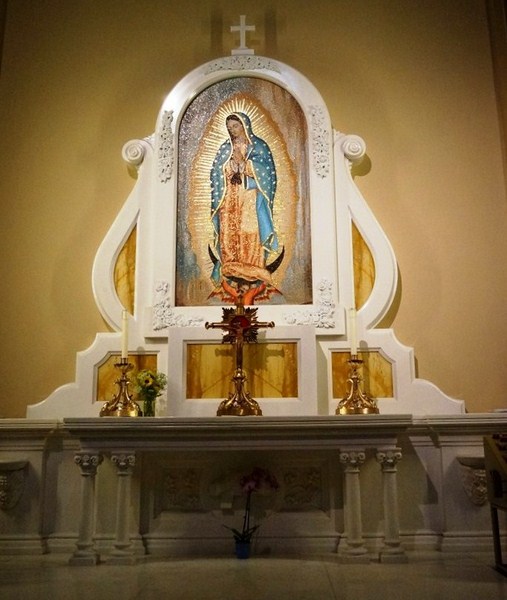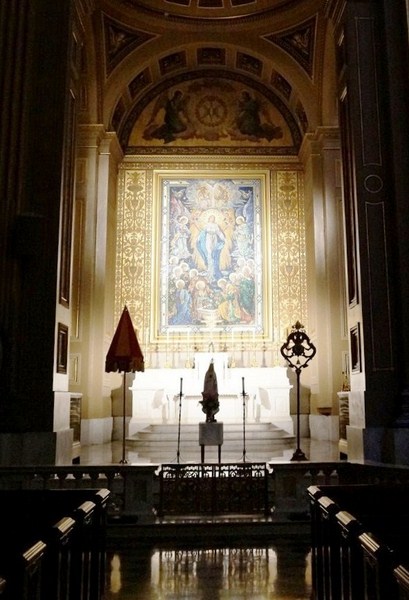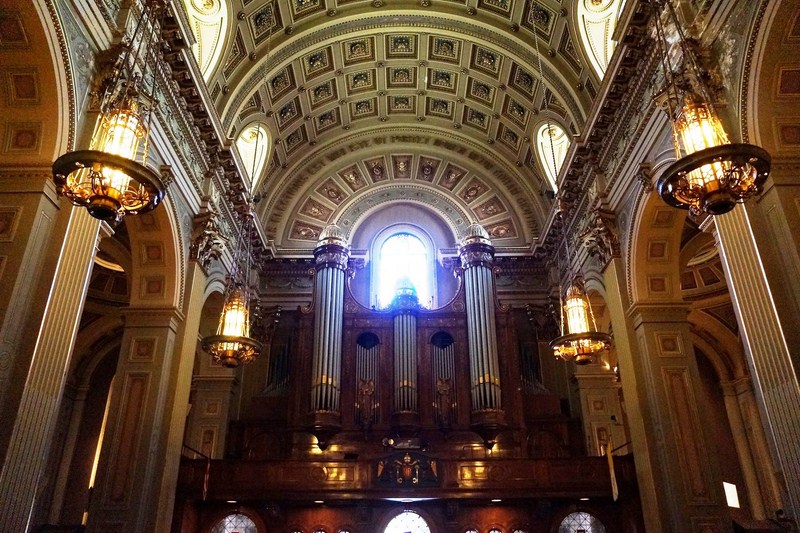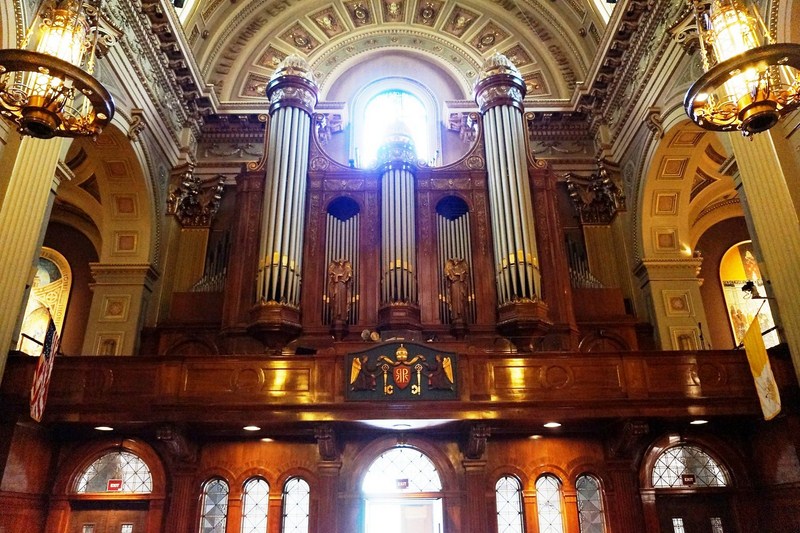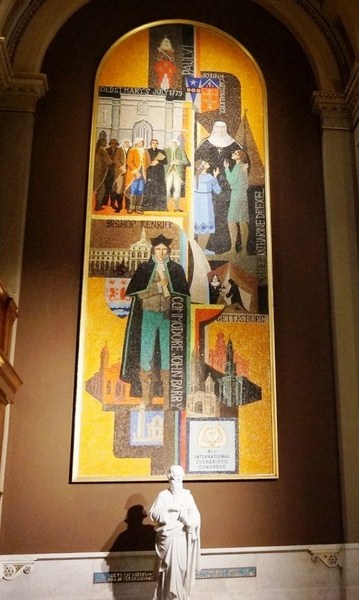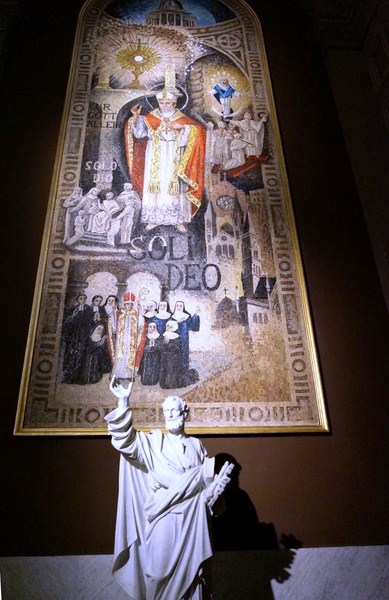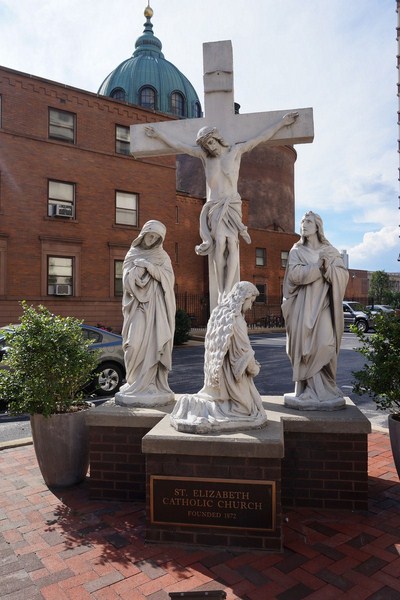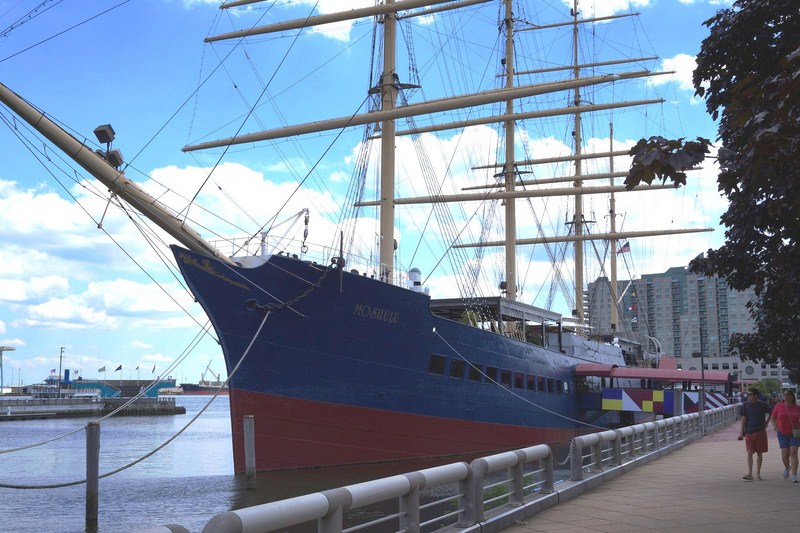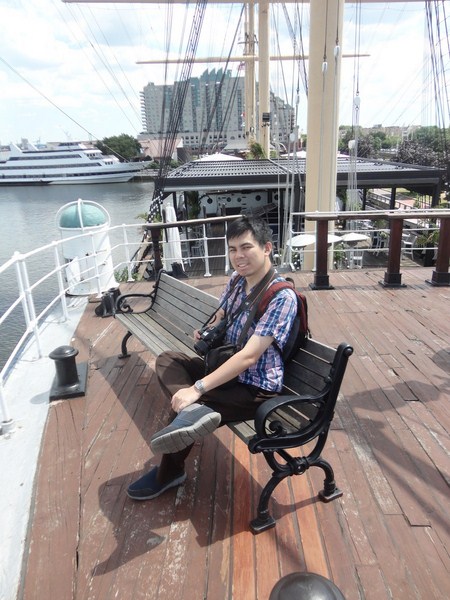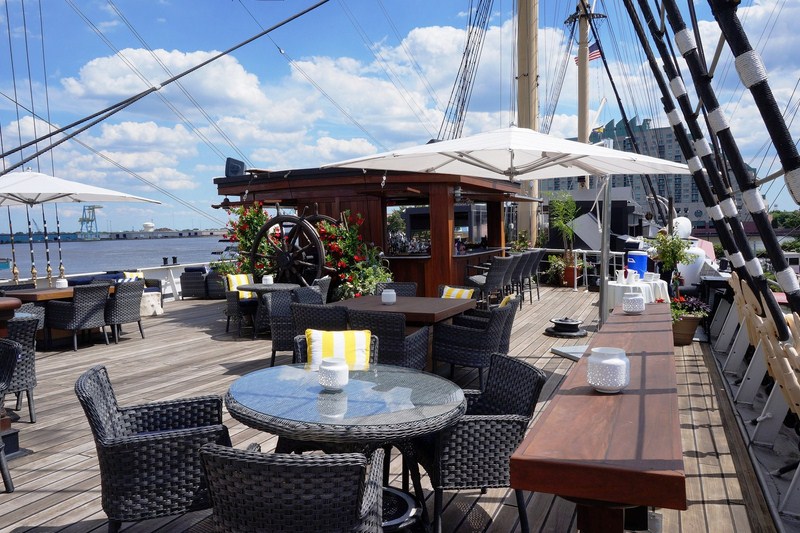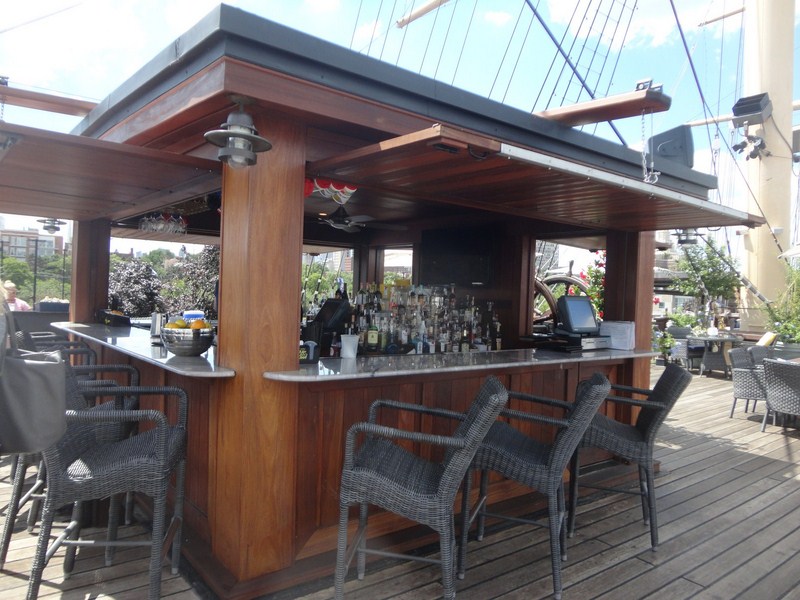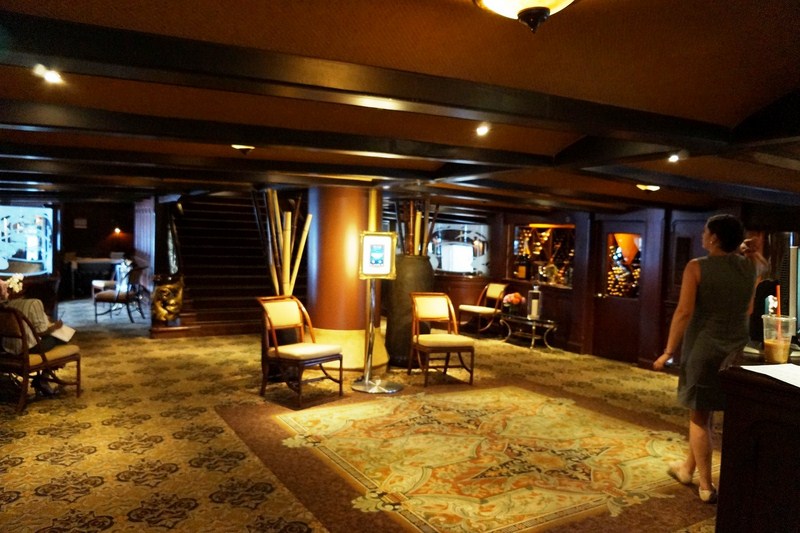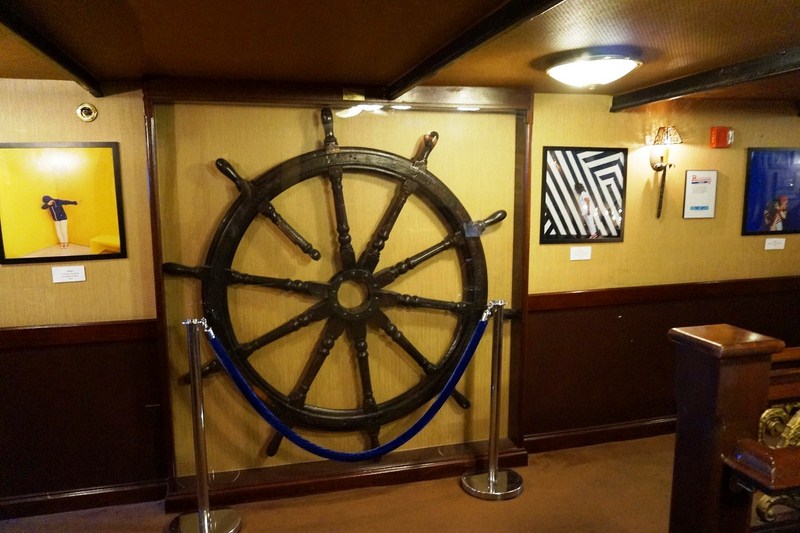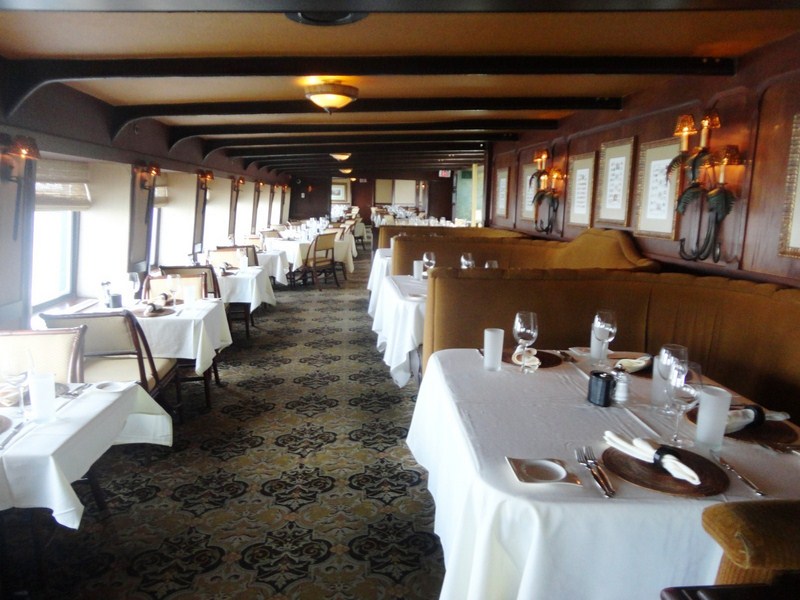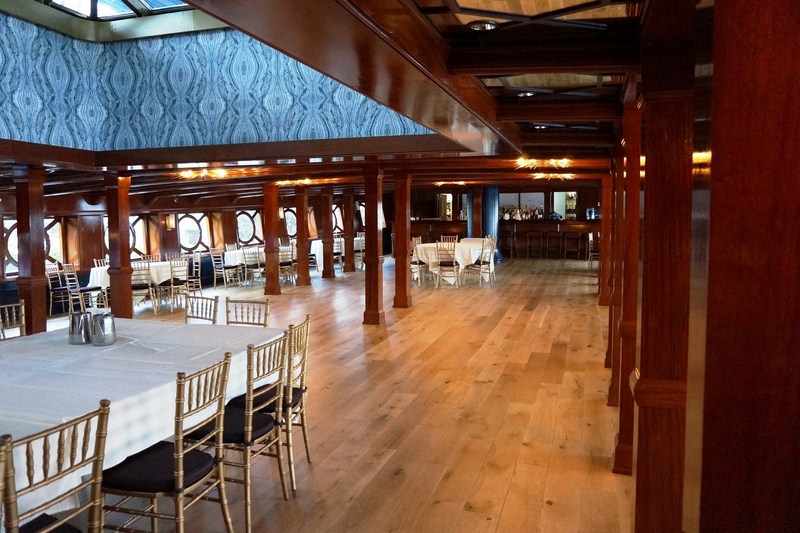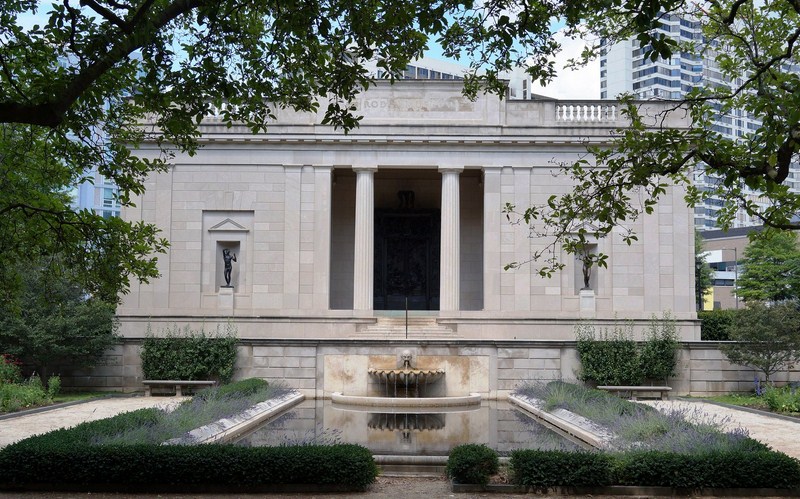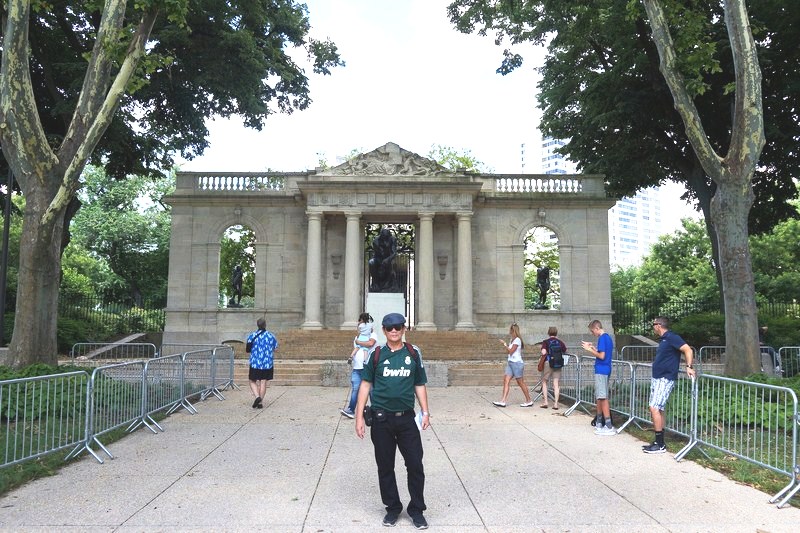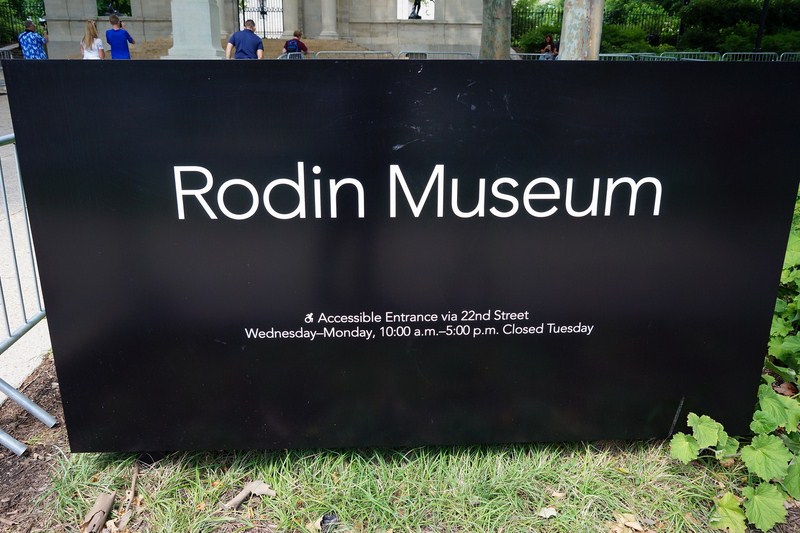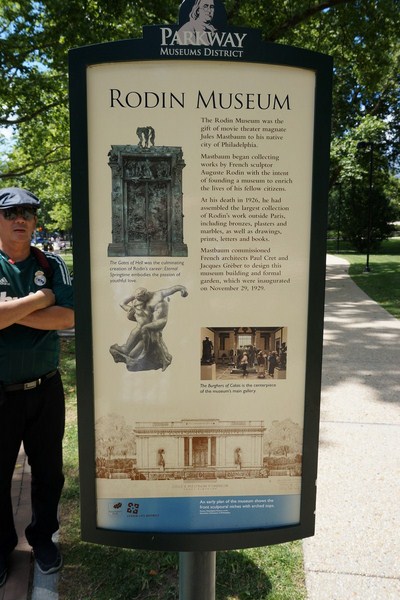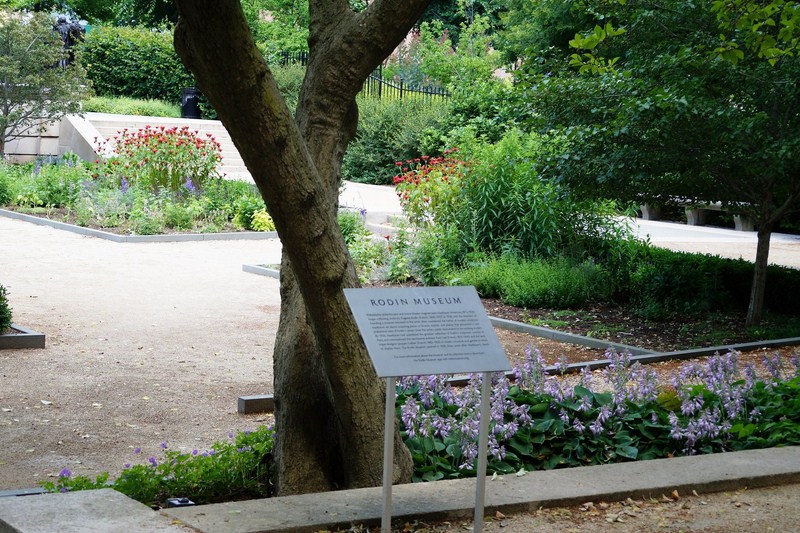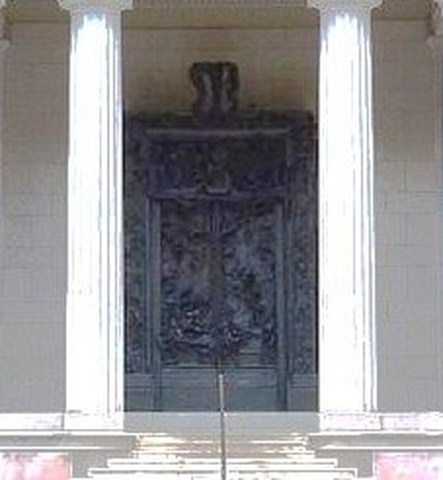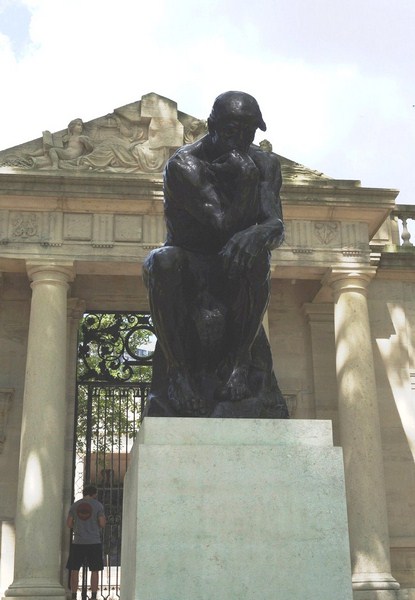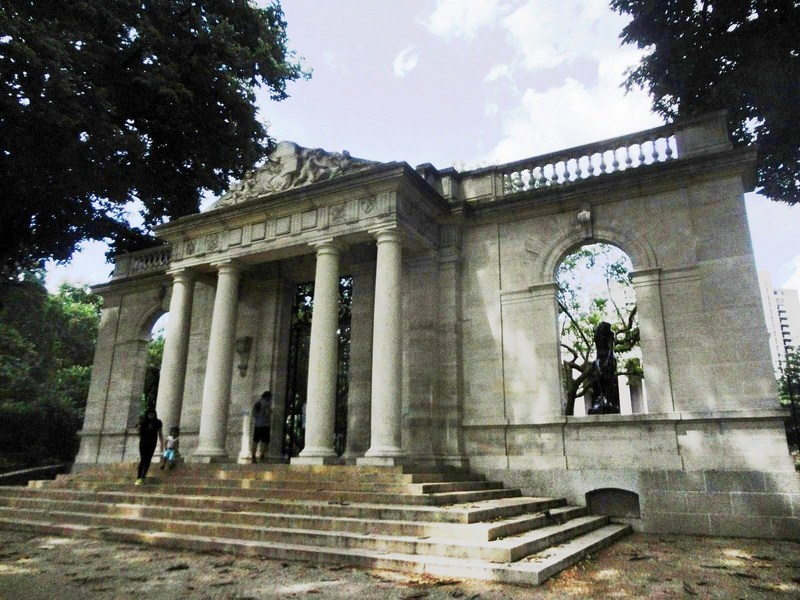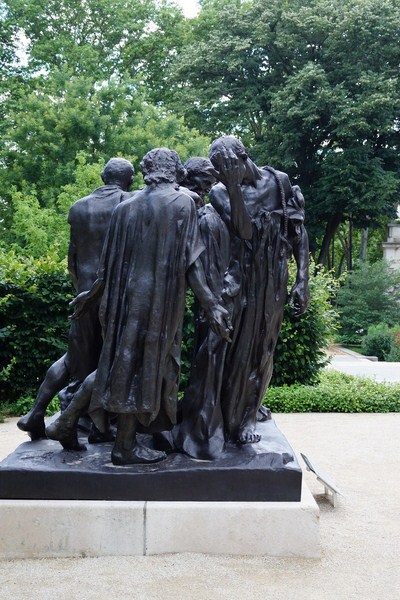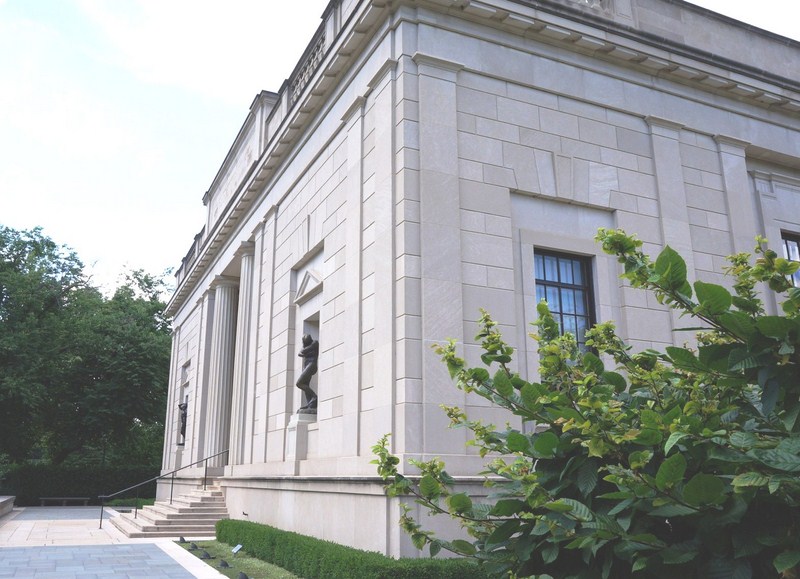This non-profit public aquarium, formerly known as the Baltimore Aquarium when it opened on August 8, 1981 (then shortly later as the National Aquarium in Baltimore) after three years of construction, was constructed during a period of urban renewal in Baltimore. From 2003 to 2013, the National Aquarium and the much older independent National Aquarium in Washington were joined as one National Aquarium with two sites.
The National Aquarium’s initial conceptual design, architecture and exhibit design was led by Peter Chermayeff of Peter Chermayeff LLC (while he was at Cambridge Seven Associates)while that for the Glass Pavilion expansion was led by Bobby C. Poole (while at Chermayeff, Sollogub & Poole).
Check out “Baltimore’s Inner Harbor“
The National Aquarium, the crown jewel of the city’s Inner Harbor and one of the finest facilities of its kind in the world, has won the following awards:
- In November 2006, the National Aquarium won a Best of Baltimore award from the Baltimore City Paper as the “Best Over Priced Destination for Families.”
- In 2011, Coastal Living magazine named the National Aquarium the No. 1 aquarium in the United States.
- In September 2011, the City Paper Reader’s Poll awarded the National Aquarium with the title of “Best Attraction” and the “Best Place to Take Kids.”
- In 2012, the National Aquarium was named by the Travel Channel as one of the best aquariums in the United States
- In 2012, it and also received the popular vote as one of the top five best aquariums to visit by 10best.com.
The largest tourism attraction in the State of Maryland, this immersive under water experience that doesn’t require getting wet has an annual attendance of 1.5 million visitors, holds more than 8,300,000 liters (2,200,000 US gallons) of water and has more than 17,000 specimens representing over 750 species.
The National Aquarium houses several exhibits including the Upland Tropical Rain Forest, a multiple-story Atlantic Coral Reef, an open ocean shark tank and Australia: Wild Extremes (which won the “Best Exhibit” award from the Association of Zoos and Aquariums in 2008) plus has a 4D Immersion Theater (added in late 2007). It can be explored in about 2.5 hours and its layout promotes a one-way traffic pattern, which works fine if you expect to see everything from start to finish with no breaks. The marine mammal pavilion, opened in 1990, is located at the adjacent south end of Pier 4.
The five-level Pier 3 Pavilion, its floors accessible via escalator and elevator except to guests with strollers (guests with toddlers must carry them on their person or use a hipster baby sling carrier, strollers must be checked in upon entering), houses two large tanks, one of which simulates an Atlantic coral reef, and the other simulates the open ocean. Each floor possesses several exhibits that communicate a main theme.
Blacktip Reef, a 1,000,000 liter (265,000 US-gallon) habitat at Level 1, replicates an Indo-Pacific reef landscape (living corals are exhibited elsewhere in the National Aquarium). It can be seen from many vantage points, including a new floor-to-ceiling pop-out viewing window. The habitat contains 65–70 species, mostly fish (including blacktip reef sharks).
Calypso, one of the largest animals in the exhibit, is a 500-pound green sea turtle introduced into Blacktip Reef in July 2013. Rescued off the shore of Long Island in 2000, her left front flipper had become infected and, in order to save her life, required amputation.
Maryland: Mountains to the Sea, at Level 2, features animals that are native to Maryland. The four exhibits create the illusion that the viewer is traveling down a Maryland stream (painted turtle, wood turtle, American bullfrog, rosyside dace, etc.) from its source in the Allegheny Mountains, to a tidal marsh (diamondback terrapin, feather blenny, sheeps head minnow, etc.), to a coastal beach (striped burrfish and blue crab), and finally ending at the Atlantic shelf (clearnose skate and summer flounder).
Surviving Through Adaptation, Living Seashore, at Level 3, features fish (electric eel, chambered nautilus, and giant Pacific octopus) that possess adaptations needed to survive in their various environments.
Living Seashore, giving guests the opportunity to explore the ever-changing Mid-Atlantic shoreline, features two touch pools and a variety of hands-on experiences. Animals guests can interact with include clearnose skate, Atlantic stingray, horseshoe crab, knobbed whelk, and moon jelly.
Sea Cliffs, Kelp Forest, Pacific Coral Reef, Amazon River Forest, at Level 4, displays several aquatic habitats, including a sea cliffs exhibit (houses several species of seabirds such as the Atlantic puffin); a Pacific coral reef exhibit (Banggai cardinalfish, etc.); a kelp forest exhibit; and an Amazon River forest exhibit (in which animals such as the Arrau turtle can be seen down in the water and up in the overlying foliage).
The sun-filled Upland Tropical Rain Forest, Hidden Life, at Level 5, simulates the Amazon rainforest under the glass pyramid that tops the National Aquarium.
It includes two elevated platforms for bird-watching and a cave of various glass-enclosed displays of reptiles, amphibians, and terrestrial arthropods. Exiting the rainforest, visitors head back down an escalator and are dropped at the top of a spiral ramp.
Animals featured here include Golden lion tamarin (Leontopithecus rosalia) and pygmy marmosets playing among the treetops; piranhas swiming in an open tank; a tarantula living in a glass-enclosed log; Scarlet ibis (Eudocimus ruber); Sunbittern (Eurypyga helias); Yellow-headed amazon (Amazona oratrix); White-tailed trogon (Trogon viridis); Blue-crowned motmot (Momotus momota); Blue-gray tanager (Thraupis episcopus); Blue poison dart frog (Dendrobates azureus) and Linnaeus’s two-toed sloth (Choloepus didactylus).
The large Atlantic Coral Reef, replicating the Atlantic coral reef, is filled with more than 500 exotic species that would be found anywhere from closer to shore to out into the trench and open ocean, including a green moray eel, triggerfish, and porcupine fish.
Shark Alley: Atlantic Predators, an 850,000 liter (225,000 US-gallon), ring-shaped exhibit, features sharks of varying sizes and species, including sand tiger sharks, sandbar sharks, nurse sharks, and sawfish that slowly encircle visitors.
The smaller Pier 4 Pavilion, opened in 1990, features the marine mammal exhibit and is connected to Pier 3 by an enclosed bridge. It is home to Dolphin Discovery, a 4,900,000 liter (1,300,000 US-gallon) pool housing seven Atlantic bottlenose dolphins – two males (Foster, Beau) and five females (Maya, Spirit, Chesapeake, Bayley, Jade).
Chesapeake was the first dolphin born at the aquarium in 1992 while Bayley, born in 2008, is the youngest. Guests here can watch training, feeding, and play times with the dolphins and interact with dolphin experts (“Dolphin Talk”) in the dolphin auditorium (has floor-to-ceiling windows looking out to the bay).
The pavilion also holds “Jellies Invasion: Oceans Out of Balance,”a temporary exhibit, showcases 12 different species of jellyfish – Atlantic sea nettle (Chrysaora quinquecirrha), Pacific sea nettle (Chrysaora fuscescens), Purple-striped jellyfish (Chrysaora colorata), Northern sea nettle (Chrysaora melanaster), Black sea nettle (Chrysaora achlyos), Moon jellyfish (Aurelia aurita), Egg-yolk jellyfish (Phacellophora camtschatica), Lion’s mane jellyfish (Cyanea capillata), Spotted jelly (Mastigias papua), Blue blubber jellyfish (Catostylus mosaicus), Upside-down jellyfish (Cassiopea xamachana) and Leidy’s comb jellyfish (Mnemiopsis leidyi).
It also illustrates how these animals are important bioindicators, which means that they are sensitive to changes within their environment, and therefore, serve as an early warning sign that changes are occurring within an ecosystem, whether from pollution, invasive species, climate change, or other factors.
Animal Planet Australia: Wild Extremes, at the Glass Pavilion, is structured like a large walk-in aviary (similar to the Upland Tropical Rain Forest exhibit) that allows many of the flying animals to roam freely throughout the exhibit. The exhibit, representing a river gorge in the northern region of outback Australia, is designed to show the wild extremes faced by this particular part of Australia (fire, drought and flood). Containing many pools in which Australian aquatic life can be found, guests here can see more than 1,800 individual native animals including freshwater crocodiles, turtles, free-flying birds, snakes, lizards and flying foxes.
The renovation and a multimillion-dollar Glass Pavilion north extension of the National Aquarium, started on September 5, 2002 and completed on December 16, 2005, is 120 ft (37 m) high at the tallest point and is entered through doors in a three-storey, soaring wall of glass. It features an expanded portion of 5,990 m2 (64,500 sq. ft.) whose exterior features an interactive area designed to teach visitors about bayscaping, bird-box building, the National Aquarium’s nationally recognized Marine Animal Rescue Program, water quality testing, marine debris issues and wetland restoration.
Inside, directly in the main entrance, is a prominent display (also visible from outside) of a super cool, 11 m. (35-ft.) high waterfall, over which 1,000 gallons a minute tumble, modeled after an actual waterfall in a Maryland state park. Also inside is a recreation of an Australian habitat featuring more than 50 plants, all indigenous to Australia. Carefully depicted inside the upper portion is the Umbrawarra Gorge of Australia. About 60,000 gallons of fresh water circulate in the seven Australian-themed exhibits. The gorge exhibit, depicting lands of fire, drought and flood, also features aboriginal artwork based on actual work discovered in Australia and depicting aboriginal interpretations of the land that they live on.
The 1,800 Australian animals featured here include the Gray-headed flying fox (Pteropus poliocephalus), Laughing kookaburra (Dacelo novaeguineae), Rainbow lorikeet (Trichoglossus haematodus), Zebra finch (Taeniopygia guttata), Snake-necked turtle (Chelodina longicollis), Pig-nosed turtle (Carettochelys insculpta), Black-headed python (Aspidites melanocephalus), Death adder (Acanthophis antarcticus), Frilled lizard (Chlamydosaurus kingii), Spiny-tailed monitor (Varanus acanthurus), Freshwater crocodile (Crocodylus johnstoni), Empire gudgeon (Hypseleotris compressa), Archerfish (Toxotes chatareus) and Barramundi (Lates calcarifer).
There’s also a gift shop and a food court with a small selection of food (pizza, popcorn, ice cream, sandwiches, cupcakes, cookies, etc), catered from Sodexo, with plenty of seating.
National Aquarium: 501 East Pratt St., Pier 3, Inner Harbor, Baltimore 21202, Maryland. Open 9 AM – 5 PM. The tiered ticket structure allows aquarium admission with or without the dolphin show or the 4D Immersion Theater. You can purchase or pick up tickets from the kiosk on Pier Three in front of the main building (the westernmost structure), then enter the main building’s doors farthest from the ticket kiosk. Members enter the doors closest to ticketing. Admission: adults (US$39.95), children (3-11, US$24.95). The dolphin show and the 4D Immersion Theater are optional experiences. They do not offer student discounts. Tickets for the 4D movies are an extra US$5. Tel: 410-576-3800. Website: www.aqua.org.

